

How to Teach Your Child to Write an Essay – Step by Step

Children are naturally creative, and essay writing should come easy to them. But it usually doesn’t.
So, how can you teach your child essay writing while making the process enjoyable for both of you?
I’m Tutor Phil, and in this article I’ll show you how to teach your child how to express thoughts on paper, even if some resistance is present.
We’ll first learn three principles that will help you make progress fast. And then we’ll go through the step-by-step process of teaching your child how to write an essay.
Principle 1. Clarity equals motivation
We’ve all heard the expression: “You can lead the horse to the water, but you can’t make it drink.” One of your concerns can be your child’s motivation.
You may be convinced that your child hates writing or is really bored with it. Perhaps your child will do anything to avoid sitting down to write.
And you know what – any or all of the above may be true. But your child can still learn how to write an essay because it is not the lack of motivation per se that is the problem.
In this short video, Dr. Lee Hausner gives some eye-opening advice about motivating a child:
Here are the key points Dr. Hausner makes:
- You cannot create motivation in somebody else.
- Strong parents often mistakenly feel that they can transfer their motivation onto their children.
- Motivation is internal.
- Simplistic formula: “ Activity + Satisfaction = Motivation .”
- Conversely, “ Activity + Stress & Pressure = Avoidance .”
- Create an environment where your child can be successful and enjoy what he does.
- Encourage and reward any small success and bit of progress.
Let’s apply these principles to motivating a child in writing an essay.
How to motivate a child to write
Chances are that if your child would rather not engage in writing, that is primarily because the process is fuzzy in his mind (and I’ll use the pronoun “he” to refer to your child throughout the tutorial, for the sake of elegance and brevity).
You see, essay writing is not really taught in school. It is taught kind of sort of, but not really.
Assigning a topic, grading the essays, and making suggestions for improvement is not teaching. It’s only a part of the process.
To teach is to give the student a method, a step-by-step process, in which every step can be measured and improved.
That’s what I’m about to give you. And that’s what you will need to effectively teach your child.
But when a child does not have a step-by-step method, the process is fuzzy in his mind. And whatever is fuzzy is viewed as complicated and difficult because it’s like eating an elephant whole.
Let’s revisit Dr. Hausner’s formula: “ Activity + Satisfaction = Motivation .”
Activity can be satisfying only if it is successful to some degree. When your child succeeds at something, and you acknowledge him for it, that becomes fun, enjoyable, and satisfying.
But you see, it’s hard to succeed at something without knowing what you’re doing. And even if you succeed, if you did not follow a recipe, then in the back of your mind you suspect that you probably can’t repeat or replicate the success.
Not knowing what to do while being expected to do it is a recipe for avoidance. And guess what – your child probably got his share of fuzzy instructions.
For example, consider this instruction:
“Tie it all together.”
This statement is meaningless – to a child or even to an adult. What does it really mean to “tie it all together?” And yet, this is how they usually teach how to write a conclusion paragraph, as an example.
But such a statement only creates fuzziness and demotivates.
So, in this tutorial, we’ll be cultivating clarity. I’ll be giving you crystal clear instructions so you could develop clarity in yourself and help your child develop it, too.
Principle 2. Writing is thinking on paper
An essay consists of sentences. The word “ sentence ” comes from the Latin word “sententia,” which means “thought.”
Thus, to write literally means to express thoughts on paper. Why is this important?
This is important because by teaching your child how to write an essay, you’re really teaching him how to think .
Your child will carry this skill through his entire life. It will be useful, even indispensable in:
- Acing standardized tests
- Writing papers in college
- Putting together reports and presentation professionally
- Defending a point of view effectively
You can tell I take essay writing seriously 🙂
But if you ever run out of patience yourself, just remember that you’re really teaching your child how to think.
Principle 3. Essays are built not written
When you child hears the word “ write ,” he gets that queasy feeling in the pit of his stomach.
We’ll make it a lot easier for him by thinking of writing an essay and referring to it as just “ building an essay.”
If your child has ever loved playing with Lego, then the method you’re about to learn will feel familiar, both in terms of motivation and developing the skill.
By the way, if you want to brush up your own essay writing skills before you sit down with your child to teach him, I highly recommend this article: Essay Writing for Beginners .
All right – without further ado, here are…
Six steps to teaching your child essay writing:
Step 1. Pick a topic and say something about it
In order to write, your child must write about something . That something is the subject of the essay. In this step, you want to help your child pick a topic and say something about it.
In essence, you’re asking your child these two questions:
What will your essay be about?
- What about it?
For example,
“My essay will be about grandma’s lasagna.”
“Okay. What about grandma’s lasagna?”
“It’s my favorite food.”
The result will be a complete main point, also known as the thesis. A thesis is the main point of the entire essay summarized in one sentence:
“My grandma’s lasagna is my favorite food.”
Boom! Now, the reader knows exactly what this essay will be about. It is also clear that this is going to be a glowing review.
Here’s my short video explaining what a thesis is:
When teaching a child, it’s important to keep the topic unilateral. In other words, it should be either positive or negative. It should be one simple idea.
Don’t start out trying to develop a more complex topic that offers a balanced perspective with positives and negatives. Don’t do a compare/contrast, either. Keep it simple for now.
This is the first step because the main point is the genesis for all other ideas in the essay .
How to help your child pick a topic
Encourage your child to pick a topic he can get excited about because then he’ll be enthusiastic thinking and talking about it.
Try to think of some of the things you know he is interested in. He can write an essay about absolutely anything.
It doesn’t have to be a serious or an academic subject. It could be anything from apple pie to Spiderman.
Of course, the subject should be informed by your child’s age, as well. But once you sit down to work on essay writing, make it clear to your child that he can pick any topic he wants.
Ask your child what he would like to write about or “build into an essay.” And whatever he chooses, just run with it. That’s what your first essay together will be about.
Once you’re settled on the topic, just have your child write it down on a piece of paper or type it into the computer.
Here is a list of suggestions for essay topics to give a try:
- What I love the most about the summer
- My favorite thing to do on weekends
- John is my best friend because…
- Essay writing is…
- My least favorite day of the week is…
- My favorite season is…
- It is important to be brave (intelligent, skillful at something, etc.)
- If I could have any animal for a pet, it would be…
- My sister (brother) makes my life (exciting, difficult, etc.)
- Holidays are fun times (or dreadful times).
Remember – this is not the only or the last essay you’ll write together. Just encourage your child to pick a topic and write it down. Now, you’re ready for the next step.
Step 2. Practice the Power of Three
We’re building our essays, remember? Not writing them. At least at this point, all you’ve done is encouraged your child to pick a topic. No writing involved yet.
In this step, no real writing is involved, either. It’s just a mental exercise, really.
In writing or building an essay, it is necessary to break things into parts. Young children love to break things because they want to see how something works or what it looks like inside.
How do you write an essay about an egg?
You must first divide the concept of an egg into parts. How do you do that? I highly recommend this simple technique I call the Power of Three.

Three is an optimal number for a young brain, and really for adults, as well, to think about and process. Our brain thinks like this: “One, two, three, many.”
One doesn’t help us because you’re not dividing. Two is okay but not quite enough ideas to develop.
Three is easy to deal with while giving your child a challenge. And let’s set the record straight – thinking is not easy. It is challenging. This is why so few people teach it.
But we’re making it fun by breaking it into steps and providing clear instructions.
Okay, so back to the egg. Let’s apply the power of three to the idea of an egg:
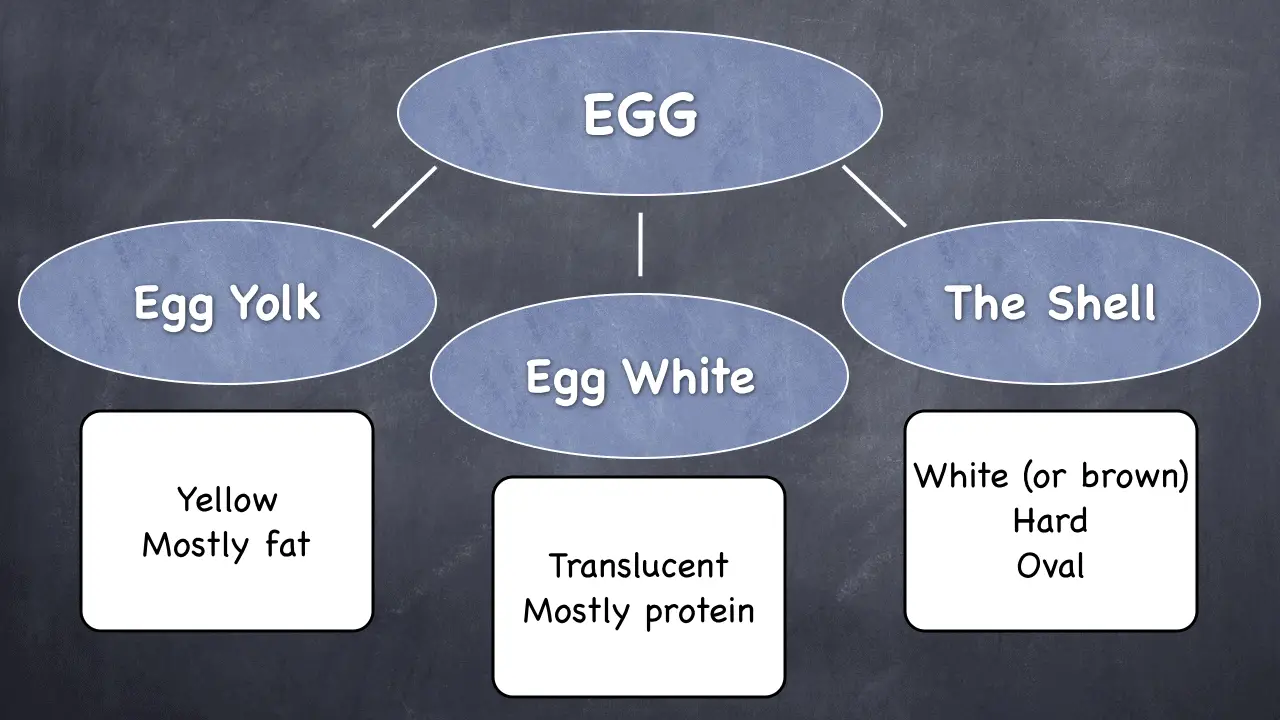
You see, if we only have a whole egg as an idea, it’s like staring at the blank screen or sheet of paper. Nothing causes the writer’s block better than one solid piece.
But now that we’ve divided this idea into three sub-ideas, or supporting ideas, this makes our life discussing eggs a lot easier.
Now, if we wanted to write an essay about eggs, we can discuss:
- The yolk and its color, taste, and nutritional content
- The egg white, its color, taste, and nutritional content
- The shell, its color, texture, and shape
Note that when we divide a topic or an idea, each part must be different from the other parts in some important ways. In other words, we want three distinct parts.
You can use this part of the tutorial and ask your child to think about how to divide an egg into parts. It’s a very intuitive step, and your child will love the challenge.
And by the way, you child may get very creative about it because the answer is not necessarily the yolks, the white, and the shell. It could be:
- Chicken eggs
- Ostrich eggs
- Boiled eggs
Whatever way to divide eggs into three concepts your child comes up with, approve and praise it. Now, let’s apply the power of three to an actual topic.
We need a topic that we’ll use for the rest of the tutorial. Here it is:
“If I could have any animal for a pet, it would be a panther.”
Applying the Power of Three to an essay topic
Let’s apply what we just learned to this topic about a panther. Note that we have the entire thesis, a complete main point. Our subject is “a panther as a pet.”
We’re just using this example with an understanding that panthers don’t make good pets and belong in the wild. But since we asked, we should roll with the child’s imagination.
Now, you want to encourage your child to come up with three reasons why he would choose a panther as a pet.
This is a challenging step. The first one or two reasons will come relatively easily. The third reason usually makes the child, anyone really, scratch his head a little.
Let’s come up with three reasons why a panther might make a great pet.
Reason 1. Panthers are magnificently beautiful.
Great! That’s a good reason.
Reason 2. A panther is more powerful than virtually any other pet.
That’s another legitimate reason to want a panther for a pet – you’re the king of the neighborhood, if not the whole town.
And now, we’re thinking of reason 3, which will be the most challenging, so be ready for that.
Reason 3. Panthers are loyal.
I’m making this one up because I really have no idea if panthers are loyal to their human owners when they have any. But I need a reason, this is just a practice essay, and anything goes.
When your child comes up with a reason that is not necessarily true or plausible, let him run with it. What really matters is how well he can support his points by using his logic and imagination.
Working with facts is next level. Right now, you want your child to get comfortable dividing topics into subtopics.
The only criterion that matters is whether this subtopic actually helps support the main idea. If it does, it works.
Step 3. Build a clear thesis statement
Once you know the topic and the supporting points, you have everything you need to write out the thesis statement. Note that there is a difference between a thesis and a thesis statement.
Here’s a short video with a simple definition and example of a thesis statement:
Once you and your child have completed steps 1 & 2 thoroughly, step 3 is really easy. All you need to do is write out the thesis statement, using the information you already have.
In fact, at this point, you should have every sentence of your statement and just need to put them all together into one paragraph. Let’s write out our complete thesis statement:
“If I could have any animal for a pet, it would be a panther, for three reasons. Panthers are magnificently beautiful. They are more powerful than virtually any other kind of a pet. And they are loyal.”
Note that we added the phrase “ for three reasons ” to indicate that we are introducing the actual reasons. In other words, we are building an introductory paragraph. We’re just presenting our main and supporting points here.
When you read this opening paragraph, you unmistakably come away with a clear idea of what this essay is about. It makes a simple statement and declares three reasons why it is true. And that’s it.
It is so clear that not even the least careful reader in the world can possibly miss the point. This is the kind of writing you want to cultivate in your child. Because, remember, writing reflects thinking. It would be impossible to write this paragraph without thinking clearly.
Note also that there is no need for embellishments or other kinds of fluff. Elegant writing is like sculpture – you take away until there is no more left to take away.
And guess what – we now have a great first paragraph going! Without much writing, we have just written the first paragraph. We were mostly building and dividing and thinking and imagining. And the result is a whole opening paragraph.
Step 4. Build the body of the essay
The body of the essay is where the main point is supported with evidence. Let’s revisit one of the rules of writing – to write an essay, you need to divide things into parts.
The body of the essay is always divided into sections. Now, since your child is presumably a beginner, we simply call the sections paragraphs.
But keep in mind that a section can have more than one paragraph. An essay does not necessarily have the standard 5-paragraph structure. It can be as long as your child wants.
But in this tutorial, each of our sections has just one paragraph, and that’s perfectly sufficient.
How many sections will our body of the essay have? Well, we used the power of three, we came up with three supporting points, and so the body of the essay should naturally contain three paragraphs.
How long should the paragraphs be? Let me show you how to gauge word count.
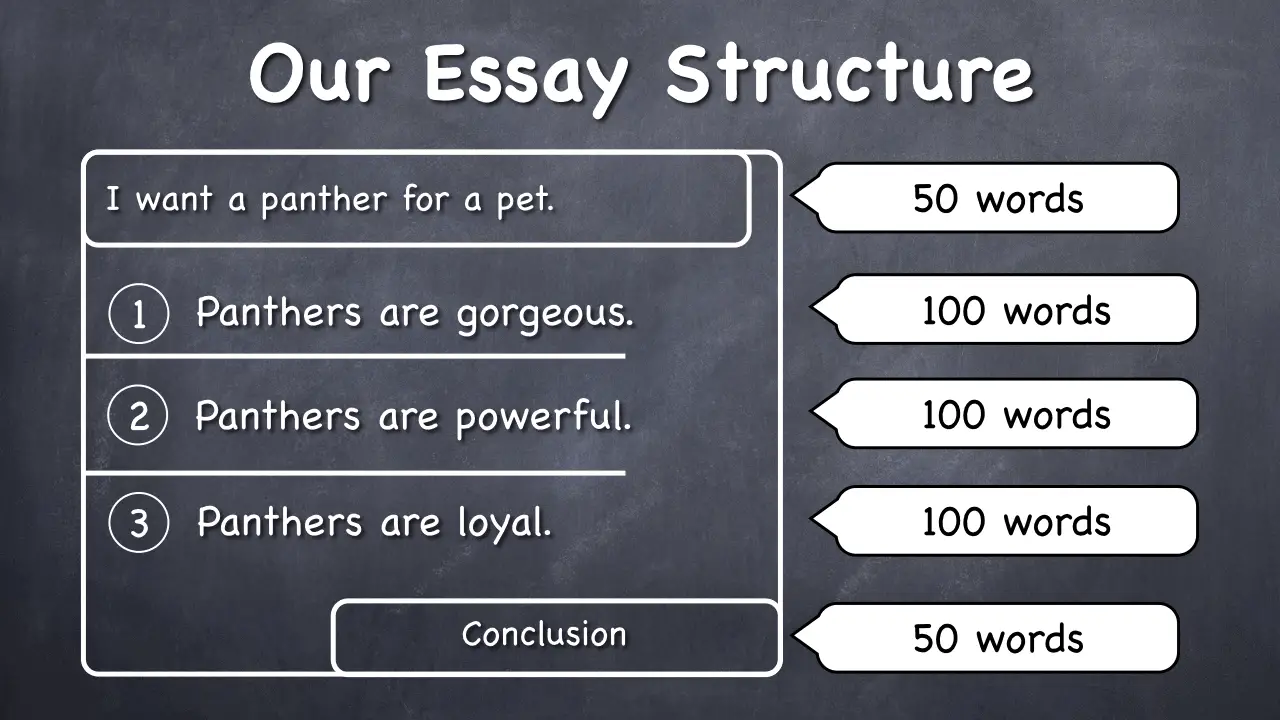
This is just an example of how you can teach your child to distribute the number of words across paragraphs.
As you can see, our body paragraphs should probably be longer than the introductory paragraph and the conclusion.
This is how I always teach my students to go about a writing assignment that has a certain word count requirement. The essay above will contain about 400 words.
If your child needs to write 600 words, then the following might be a good distribution:
- Introductory paragraph – 75 words
- Body paragraph 1 – 150 words
- Body paragraph 2 – 150 words
- Body paragraph 3 – 150 words
- Conclusion – 75 words
By doing this kind of essay arithmetic, it is easy to map out how much to write in each paragraph and not go overboard in any part of the essay.
Body paragraph structure
A paragraph in the body of an essay has a distinct structure. And this structure is not restrictive but it is rather liberating because your child will know exactly how to build it out.

The first sentence in the body paragraph is always the lead sentence. It must summarize the contents of the paragraph.
The good news is that this sentence is usually a form of one of the sentences that we’ve already written. How so?
Well, in our thesis statement, we have three supporting points. Each of them is essentially a lead sentence for that section or paragraph of the essay. For example, consider this sentence from our thesis statement:
“Panthers are magnificently beautiful.”
This is the first reason that your child would like a panther as a pet. It is also a very clear standalone sentence.
It is also an almost perfect lead sentence. I say “ almost ” because we don’t want to repeat sentences in an essay.
So, we’ll take this sentence as a base and add one or two words to it. We can also change a word or two by using synonyms. That way, we’ll expand it just slightly and turn it into a perfect lead sentence for our first body paragraph:
“ Panthers are very beautiful and graceful animals.”
Okay, so we added the epithet “graceful,” but that’s okay because grace is virtually synonymous with beauty. And now we have a great lead sentence and are ready to proceed.
Let’s write out the entire first body paragraph and see how it works:
“ Panthers are very graceful and beautiful animals. When portrayed in documentaries about animals, panthers are nicely balanced. They are not as huge as tigers or lions. And their size allows them to be nimble and flexible. Their size and agility make them move very beautifully, almost artistically. When I imagine walking with a pet like that on the street, I can see people staring at my panther and admiring its beauty. It would definitely be the most beautiful pet in my entire neighborhood.”
The first sentence, as we already know, is the lead sentence. The next three sentences explain how panthers’ balanced size and agility make them graceful.
The following sentence is an explanation of how these qualities make them beautiful through the power of movement.
And finally comes the most specific bit of evidence – an example. This child paints a perfect picture of himself walking his pet panther on a leash. People admire the animal’s beauty, and the kid gets a tremendous kick out of this experience.
It is an example because it contains imagery, perhaps even sounds. It is a specific event happening in a particular place and time.
As you can see, this paragraph proceeds from general to specific. It also follows the structure in the diagram perfectly.
Guide your child through writing two more of these paragraphs, following the same organization. And you’re done with the body.
Proceeding from general to specific
Argumentative (expository) essays always proceed from general to specific. Our most general statement is the thesis, and it’s the first statement in the essay.
Then we have our supporting points, and each of them is more specific than the thesis but more general than anything else in the essay.
Each lead sentence is slightly more specific than the preceding supporting points in the thesis statement.
Then, an explanation is even more specific. And finally, examples are the most specific elements in an essay.
When working with your child, cultivate this ability to see the difference between the general and the specific. And help your child proceed in that manner in the essay.
This ability is a mark of a developed and mature writer and thinker.
Step 5. Add the conclusion
I almost always recommend concluding an essay with a simple restatement. Meaning, your child should learn how to say the same things in different words in the conclusion.
Why did I say, “almost?” Because some teachers will require that your child write a conclusion without repetition.
In that case, the teacher should instruct the student what she expects to read in the conclusion. A great way to deal with this situation is to approach the teacher and ask what kind of a conclusion she expects.
And she’ll say what she wants, and your child will simply abide.
But in the vast majority of cases, simple restatement works just fine. All it really entails is writing out an equivalent of the thesis statement – only using different words and phrases.
Here is our thesis statement:
And here’s our conclusion:
“I would love to have a panther as a pet. Panthers are such magnificent animals that everyone would admire my pet. People would also respect it and keep some distance because of its power. And the loyalty of panthers would definitely seal the deal.”
All we did was restate the points previously made. Let your child master writing this kind of a conclusion. And if you’d like a detailed tutorial on how to write conclusions, I wrote one you can access here .
Step 6. Add an introductory sentence
The final step is to add one sentence in the first paragraph. I didn’t use to teach it because it’s perfectly fine to get straight to the point in an essay.
This little introduction is an equivalent of clearing your throat 🙂
However, teachers in school and professors in college expect some kind of an introduction. So, all your child has to do is add one introductory sentence right before the thesis.
This sentence should be even more general than the thesis. It should kind of pull the reader from his world into the world of the essay.
Let’s write such a sentence as our introduction:
“Not all pets are created equal, and people have their choices.”
And here’s our complete introductory paragraph:
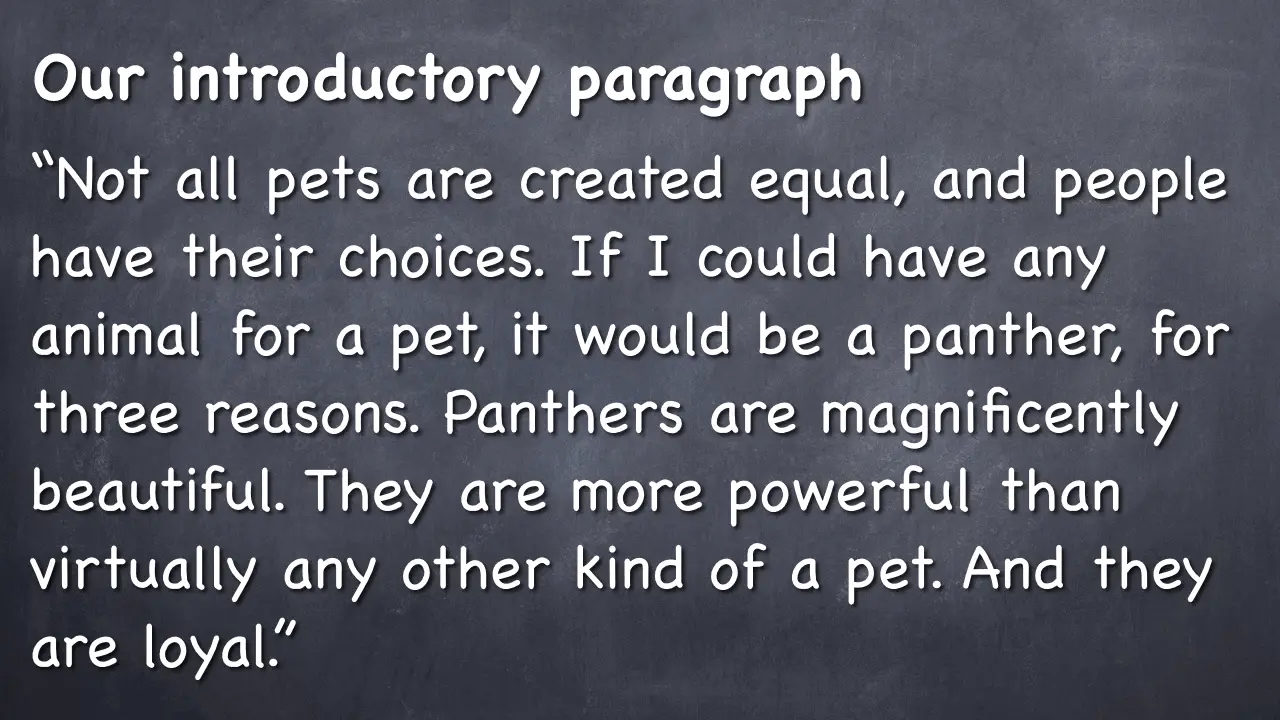
And this concludes the tutorial. You can keep coming back to it as often as you want to follow the steps, using different topics.
If you’d like the help of a professional, don’t hesitate and hit me up .
Tutor Phil is an e-learning professional who helps adult learners finish their degrees by teaching them academic writing skills.
Recent Posts
How to Write an Essay about Why You Want to Become a Nurse
If you're eager to write an essay about why you want to become a nurse, then you've arrived at the right tutorial! An essay about why you want to enter the nursing profession can help to...
How to Write an Essay about Why You Deserve a Job
If you're preparing for a job application or interview, knowing how to express why you deserve a role is essential. This tutorial will guide you in crafting an effective essay to convey this...
How to write a perfect essay
Need to write an essay? Does the assignment feel as big as climbing Mount Everest? Fear not. You’re up to the challenge! The following step-by step tips from the Nat Geo Kids Almanac will help you with this monumental task.
Sometimes the subject matter of your essay is assigned to you, sometimes it’s not. Either way, you have to decide what you want to say. Start by brainstorming some ideas, writing down any thoughts you have about the subject. Then read over everything you’ve come up with and consider which idea you think is the strongest. Ask yourself what you want to write about the most. Keep in mind the goal of your essay. Can you achieve the goal of the assignment with this topic? If so, you’re good to go.
WRITE A TOPIC SENTENCE
This is the main idea of your essay, a statement of your thoughts on the subject. Again, consider the goal of your essay. Think of the topic sentence as an introduction that tells your reader what the rest of your essay will be about.
OUTLINE YOUR IDEAS
Once you have a good topic sentence, you then need to support that main idea with more detailed information, facts, thoughts, and examples. These supporting points answer one question about your topic sentence—“Why?” This is where research and perhaps more brainstorming come in. Then organize these points in the way you think makes the most sense, probably in order of importance. Now you have an outline for your essay.
ON YOUR MARK, GET SET, WRITE!
Follow your outline, using each of your supporting points as the topic sentence of its own paragraph. Use descriptive words to get your ideas across to the reader. Go into detail, using specific information to tell your story or make your point. Stay on track, making sure that everything you include is somehow related to the main idea of your essay. Use transitions to make your writing flow.
Finish your essay with a conclusion that summarizes your entire essay and 5 restates your main idea.
PROOFREAD AND REVISE
Check for errors in spelling, capitalization, punctuation, and grammar. Look for ways to make your writing clear, understandable, and interesting. Use descriptive verbs, adjectives, or adverbs when possible. It also helps to have someone else read your work to point out things you might have missed. Then make the necessary corrections and changes in a second draft. Repeat this revision process once more to make your final draft as good as you can.
Download the pdf .
Homework help
Science lab, (ad) national geographic kids almanac.
- Terms of Use
- Privacy Policy
- Your California Privacy Rights
- Children's Online Privacy Policy
- Interest-Based Ads
- About Nielsen Measurement
- Do Not Sell My Info
- National Geographic
- National Geographic Education
- Shop Nat Geo
- Customer Service
- Manage Your Subscription
Copyright © 1996-2015 National Geographic Society Copyright © 2015-2024 National Geographic Partners, LLC. All rights reserved
My Kid Can’t Write an Essay Without Having a Meltdown
She gets overwhelmed every time—but breaking down the assignment into smaller steps could help her manage it.

Editor’s Note: Every Tuesday, Abby Freireich and Brian Platzer take questions from readers about their kids’ education. Have one? Email them at [email protected].
Dear Abby and Brian,
My daughter is in ninth grade and is really struggling with essay writing. English, history, the subject doesn’t matter—she has a meltdown every time. She just stares at the screen and doesn’t know where to start.
I try to remember what I learned in high school about the Roman empire or Robert Frost to get her going. I’ve tried to leave her alone, or to sit there doing the work along with her. None of it ever seems to help. I find myself dreading her getting an essay assignment, because whenever she does, the night before it’s due nearly always ends with her in tears or yelling at me.
What can I do?
Julia Virginia
Dear Julia,
Seeing your daughter so upset when confronted with writing assignments can be painful. We appreciate your instinct to help, but neither leaving your daughter alone nor sitting there doing the work along with her is the right approach. What will help is taking an assignment that overwhelms her and breaking it down into a series of small, manageable steps that she can do on her own. The goal is not to get an essay written no matter what, but to set her up for being an independent, confident student who doesn’t rely on you at every turn.
You’ll want to sit down with her and say something like “I know essay writing has been really hard, but it will help if you can think about it as a set of smaller steps and budget enough time for each.” Then go through these steps with her:
- Read the material, highlighting important points and taking notes.
This is the starting point for any good essay writing. Suggest that even before she is assigned a writing prompt, she begins taking notes on the material as she reads it. Annotation should serve as a conversation with the text: She should mark significant or reaction-provoking passages and jot down a few words about why they are noteworthy.
- Review the notes, looking for one thread that ties everything together.
This is how she will begin building her thesis. Teachers sometimes disagree over whether students should start with a working thesis and then find evidence to build their case, or start with examples and see where they lead. We believe that the thesis and examples should be developed together; as your daughter narrows down evidence, her thesis can evolve.
- Write topic sentences for each of the body paragraphs, and then match topic sentences with examples and analysis to build an outline.
Your daughter should think about defending her thesis with a series of sub-arguments, each expressed as a topic sentence for her body paragraphs. Many students have difficulty connecting their arguments to evidence, because they are inclined to summarize the material rather than critically evaluate it. Your daughter can ask herself what her examples reveal about her topic sentences and then delve into the importance of word choice and literary devices as is relevant.
- Write introduction and conclusion paragraphs.
With topic sentences, examples, and analysis for each body paragraph together in outline form, your daughter can move on to her introduction and conclusion. The focus of her introduction should be general background information leading up to the thesis, and the conclusion should offer new insight into the significance of the topic and a parting thought for the reader to ponder.
- Use the outline, introductory paragraph, and conclusion to write a first draft.
Once she has completed an outline, she’ll have a straightforward road map for writing a draft with more thoroughly developed ideas.
- Look over the draft twice: once to ensure that the argument flows logically and a second time to eliminate errors in grammar and syntax, as well as to sharpen word choice.
We recommend that all editing be done while reading the work aloud from a printed draft, pencil in hand. Once these revisions are implemented, she’ll have a final draft ready to go.
If a single major assignment becomes six minor ones, your daughter is far less likely to feel overwhelmed. This process, from start to finish, will take about a week, so she should plan accordingly. With a calendar in front of her, she should look at what assignments she has coming up for the rest of the semester and mark deadlines for each of these steps so that she won’t have to rush at the end. Remember that writing always takes longer than it seems it should. Helping your daughter plan well in advance should allow her to approach writing with less trepidation and instead see it as a process composed of clear, manageable steps.
As she does this more and more, she’ll find that her belief in herself will grow—and you won’t cringe when you hear about the English essay due next week.
B y submitting a letter, you are agreeing to let The Atlantic use it—in part or in full—and we may edit it for length and/or clarity.
- Create new account

7 Tips to Teach Essay Writing to Your Children

Writing is one of the most important skills for your child’s education. The unfortunate thing is that classroom settings often don’t provide enough practice time to really hone those writing skills. Experts from Ace Papers can provide good lessons and instruction, but there’s still a lot of slack for parents to pick up. Follow these seven tips to teach essay writing to your children.
Refresh on basic writing skills
Before you dive into essay writing, make sure your child has a good grasp on the basic elements of writing. Make sure they know the importance of things such as proper spelling and the rules of grammar. Remember to teach them these concepts at an age appropriate level, you don’t need to deliver a huge lecture. Be patient and correct them when they make a mistake and explain what the proper way to do things is. These fundamentals are the basic building blocks that you’ll be building their essay skills on. Here is an assortment of ideas to choose research paper help , combine or alter in order to come up with the answer that works best for your kid.
Start with a thesis
“Explaining an abstract concept such as a thesis to child can be challenging, but it’s a necessary understanding if they are to write an essay. Give them clear direction and simple examples to help explain what a thesis is and why it’s so important to an essay. Provide some prompts to get them started or give them some examples of what a good thesis statement is,” writes Carolyn Kirsch, educator at Academized . Try and emphasize that the thesis is the core of an essay, everything else is built out from it.
Show them how to write an outline
Your outline is a master plan for your essay and will include all the important elements. A lot of children aren’t comfortable expressing their thoughts in writing, and an outline is a great way to encourage them and show them the logical context of their essay. Show them the basic structure, including the introduction, main body, and conclusion. Explain to them that the main body is where they will make their arguments and the conclusion should be a thoughtful summary of their main points.
Encourage them to read
One of the best ways for your child to improve their writing is simply by teaching them to love reading. Reading is great because it gives them plenty of good writing examples to soak up and learn from. Reading is also a good way to increase their vocabulary and that is key for improving writing skills. The more your child reads the more they will learn about how sentences work together and the stronger their essay writing skills will be.
Practice lots
Writing practice is very important to building essay writing skills. A lot of kids don’t get very much writing practice in the classroom. Teachers will explain the basics and give them some exercises, but the time spent writing in the classroom is very limited. Encourage your child to write at home. Help them by giving them a theme to write about for the day. The next day, you can build off that theme by having them write an essay about it.
Use technology to help your child
Chances are you associate technology with distracting your child from reading and writing. But used properly, certain technologies can be very helpful to improving your child’s essay writing skills. Don’t be afraid to let them use the tablet if they prefer to read and write using that device. Just remember though to ensure your child doesn’t copy information from other resources online. We asked online expert Adam Collins regarding how lenient colleges & schools are when it comes to plagiarism in essays, he said “Most establishments now have comprehensive plagiarism checkers when marking essays, its important children steer clear of the temptation on copy a sentence of two from different resources, as this will now be flagged easily by the tools. Pinterest can also be a great tool because it is very useful for organizing materials, and since essay writing involves research, Pinterest can be very helpful.
Online tools can help teach your kid essay writing
There are a lot of resources on the web that can help you teach essay writing to your child. Here are a few to get started with:
- ViaWriting and WritingPopulist – These grammar resources are great for simplifying the writing process and making grammar a bit more approachable.
- BigAssignments and EssayRoo – Proofreading is something a lot of children struggle with, and it requires a lot of attention to detail. These proofreading tools, suggested by Revieweal , can help.
- StudyDemic and StateofWriting – Read through these blogs with your child and you’ll get access to lots of helpful suggestions on essay writing.
- BoomEssays and UKWritings – These are editing tools that have been reviewed in Boomessays review and are very helpful at catching the mistakes you are likely to miss on your own.
- MyWritingWay and LetsGoandLearn – Check out these academic writing guides for help teaching your child to write an essay. They are simple and will walk your kid through the writing process step by step.
Conclusion The writing skills you teach your kid now will serve them for the rest of their life. Writing is a huge part of success not just in high school, but especially in college and the working world. Use these seven tips to teach essay writing to your children.
View the discussion thread.

Grace Carter is a mom who works remotely at Coursework Writing Service and Paper Fellows websites. There she manages blog posts, works with a team of proofreaders. Also, Grace teaches academic writing at the Elite Assignment Help services
Other Bloggers You May Like

Latest Articles

KITH Voices

- Create Account
- Top Products
- Parent 2 Parent
- ALL PARENTS
- SPECIAL NEEDS
- Law & Money
- Other Specialties
- Safety & Security
- Special Needs
- Premium Subscription

Teach Your Child Essay Writing in 6 Steps
Start with the basics.
Before you dive into that essay you’ll want to make sure your child has a good grasp on basic writing concepts. Grammar and spelling are the foundation on which you can help your child build that first essay. Once you’re satisfied with their understanding of these concepts, begin teaching them what a thesis is, and how to write one. “A lot of kids have trouble writing in a focused way, so help guide them and keep them on track. You’ll probably want to reinforce the idea that the thesis guides everything else they write in their essay,” recommends Paul Winston, educator at PaperFellows .
An outline is a plan or a description of the essay, showing the most important parts of it. Every essay includes an introduction, exposition, and conclusion. Outlines help people get organized when writing, and this should help your child as well. Write down the topic and their main goal which helps them clearly identify their main idea and their opinions about it. There are plenty of outline types out there, so you can easily find one that best suits your child. Then all you have to do is pull it together – creating a list of all the parts that will be in the essay.
Get them practicing
Kick start your child’s creative process by giving them some examples. It’s a lot easier to show them a concrete example, rather than trying to explain what you want them to do. As they practice they will get closer and closer to where you want them to be. Practicing is where the real improvement will come from, but be sure not to overwork them. Give them breaks and reward them for their hard work.
There are plenty of ways in which they can develop their essay writing skills. You just have to find something that sparks their interest. For instance, if your child likes video games, you can ask him to write a report on that. If they like books or comic books or TV shows, ask them to write reports where they'll compare two similar stories etc.
Encourage reading
Reading is a great way for your child to soak up all kinds of information about vocabulary and how sentences work together. The more you read to your child , or they read on their own, the better their writing will become. If they’re just not showing an interest in reading , explore your child’s favorite things in order find the right material. Once you get them interested and reading on their own, you’ll notice them picking up new words, which can be very exciting and rewarding for a parent.
Harness the power of technology
Technology gets a bad rap for distracting kids (and adults) from reading and writing, but technology can be a useful tool in enhancing your child’s experiences with the written word. Pinterest can be useful for the writing process. Your child will be identifying lots of topics and resources they may want to use for their essay, and Pinterest is a fantastic way of organizing those ideas. Just create a few boards and show your child how to pin sources onto a board. You might even find that the reason your child is struggling with an essay is because they prefer using an iPad to writing on paper or a laptop.
Try out these resources for extra help teaching essay writing
Writing can be tricky, and so can teaching writing to children. Check out these online tools for help teaching your children essay writing:
- StateofWriting & Studydemic
These are grammar resources you can use to check over your child’s writing for grammatical mistakes.
- Boomessays & Essayroo
These are online proofreading tools, listed by Simplegrad , you can use to make sure your child’s essay is polished and error-free.
- ViaWriting & Academadvisor
Check out these academic blogs for ideas and suggestions on how to teach your children essay writing. There are lots of posts here by parents who have successfully helped their children with essay writing.
- Academized & UKWritings
These are editing tools, recommended in Academized review , you can use to go over your child’s writing for typos and other mistakes.
- My Writing Way & Writing Populist
Check out these essay writing guides for help improving the writing in your child’s essay. If you struggle with writing yourself, these guides can prepare you to help your child with their essay.
Though there might be challenges as you teach your child the methods of essay writing, do your best to make the learning process fun, and eventually your child’s understanding will grow to excelling at essay writing.
about the author... Grace Carter is a teacher at Big Assignments and Assignment Help services. She teaches academic writing and curates edtech processes. Also, Grace tutors at OX Essays writing website.
Get Started Today!
- Centre Details
- Ask A Question
- Change Location
- Programs & More
How To Improve Writing Skills For Kids: 14 Easy Tips

Writing — it’s an important form of communication and a key part of education. But in today’s technology-driven world, kids aren’t given many opportunities to practise and improve their ability to write. This leaves many parents wondering how to improve their child’s writing skills.
It takes time to develop strong writing skills, and it can be a tough task to accomplish. Thankfully, there are many things that parents can do at home to help improve children’s writing skills.
From fun activities to daily reading and writing sessions, these tips on how to improve kids’ writing skills will help your child build his or her skills in no time.
Improve your child’s communication skills with these simple and fun kids’ writing activities.
14 activities to improve kids’ writing skills.
Regular reading is a stepping stone to better writing and helps kids’ strengthen their writing skills. It helps expand children’s vocabulary and shows them different ways of using words. This also makes it easier for them to use these words in their own writing.
Make it Fun!
Create writing worksheets, try different materials, write letters.
Today, writing letters is a bit of a lost art. Encourage your child to write letters to friends or family members. Distant family members will especially love receiving handwritten letters and it’s a great way to work on improving writing skills for kids.
Encourage Journalling
Create a writing space, invest time, connect their interests, create story prompts.
A fun way to improve kids’ creative writing skills is to have them write short stories.
Use Technology to Your Advantage
Make it part of your daily routine, praise their work, improving writing skills can be fun.
Writing is an important practical life skill. While developing great writing skills requires lots of time and patience, you can help your child with these simple writing exercises for kids.
Lots of reading, frequent writing time in a special writing area, and incorporating fun writing activities and games will all go a long way to giving writing skills a boost.
Need Extra Help?
If your child needs extra help improving his or her writing skills, Oxford Learning can help. Our English tutoring program helps develop kids’ writing and comprehension skills, from word recognition to paragraph writing. Contact us today !
Related Resources
5 Reasons Writing By Hand Is Good For The Brain Understanding Literacy & Your Child 5 Ways To Help Kids Learn At Home
Should Textbooks Be Replaced By Notebook Computers?
Study break tips: how to take a study break that works, related writing resources.

Is Handwriting a Lost Art?

Editing Skills Lead to Better Grades

Checklists, English, High School, Writing
Your step-by-step guide to writing an academic essay (& review checklist).

Find an Oxford Learning ® Location Near You!
We have over 100 centres across canada.
- How to Teach Essay Writing
Don't just throw your homeschooled-student intoformal essay crafting. Focus on sentence structure and basic paragraph composition before movingto more complicated formal essay composition.
Are you a competent essay writer? Even if you know how to write an essay , chances are you are dreading the coming years of teaching homeschool writing just as much as your novice writer could be dreading learning how to write . Writing comes naturally for very few, but most view writing as an insurmountable abstract mountain. The Write Foundation writing curriculum is a divide and conquer method of teaching writing. Focusing on small portions of writing paragraphs and later five-paragraph college level essays, eventually you and your students will be able to use all the necessary writing skills to easily compose wonderfully crafted formal essays .
Start with a good foundation
That is, of course, what The Write Foundation teaches. Don’t just throw your homeschooled-child into the middle of essay crafting. Focus on sentence structure and basic paragraph composition before moving to more complicated formal essay composition . Learn to write essays one bite at a time. This helps students develop writing skills by using writing tools which helps them gain confidence and enables parents who are insecure about their own writing skills learn with their students.
Hold their hand as much as they need you hold their hand.
An abstract assignment with limited instructions can appear quite daunting to a reluctant, struggling, or new writer; tiny decisions can become writing blocks in a new writer’s mind.
Share the experience with your homeschooler. Discuss writing blocks and ways to overcome them. Discuss the planning process and experience how it helps flesh out an essay. Walk them through each lesson making sure they complete each step successfully before attempting to move on in the writing process. Working side by side with your student also helps you become a better instructor by solidifying the lesson for yourself. As students gain confidence with their new skills they will need your help less and less so they will shoo you away as they learn writing is much easier using the complete writing process.
Use concrete assignments
Creative writing is very subjective, and it is also very abstract for a new writer. You need a writing curriculum which focuses on concrete assignments and provides a variety of writing topics that fit the type of writing being taught in that assignment. Give your students a structure to work into a paragraph using their creative information. Leaving several factors to the unknown, such as type of writing, structure, and so on, leaves more decisions that the novice writer is not ready to determine. An abstract assignment with limited instructions can appear quite daunting to a reluctant, struggling, or just new writer; tiny decisions can become writing blocks in a new writer’s mind. Even experienced writers face writer’s block. Students need to be given tools and taught skills that overcome “But, what do I write about?”
Know your audience
Let your child select from a list of possible writing topics that may be interesting to them. Your child may enjoy the experience more if he is writing about his favorite pastime instead of writing about your favorite pastime. Choosing topics about things that directly influence your child, such as different views about their favorite sport, the influence of network TV or political topics that hit close to home may open the doors for lively discussion and insight into your child’s mind.
Writing is a necessary life skill. When teaching writing remember you are not alone. If you are worried about teaching formal writing to your homeschooler, use the support system of The Write Foundation for any questions you may have through the process, and know that you are not alone. Look into a homeschool writing co-op in your area to lighten the burden and give new perspective on your child’s essay writing development. Use The Write Foundation and use a proven writing system.
Questions or Comments?
Recent articles.
- Correcting Run-on Sentences
- How Does Skipping the Writing Process Affect your Writing?
- Graduating Homeschooling
- Is My Child Ready for Formal Writing?
- Teaching Spelling
- Evaluating Homeschool Writing Curriculums
- Why Most Writing Curriculums Fail (and How to Make Sure your Homeschooler Doesn't!)
- Top Five Reasons Students Hate to Write (and How You can Help!)
- College Preparation for Homeschooled Students
H e is like a man building a house, who dug deep and laid the foundation on the rock. Luke 6:48

View, Print, and Practice the Sample Lessons
(We're here to help you teach!)
Now Available!
Free Reading Lists Get your copy today!
Have a struggling writer? Maybe he hates writing? Does your student just need to learn how to write? Long for teacher-friendly lesson plans you can quickly prepare and teach? Desire a writing curriculum your children will enjoy while learning creatively?
- Complete Lesson Plans
- Free Assessment Tests
- Free Reading Lists
- Organization for Writing
- Checklists & Guidelines
- Brainstorm & Outline Forms
Open doors to writing success!
Contact Rebecca . Rebecca Celsor will answer your questions regarding how to easily teach your child to write.
" My 14 yr old is Autistic. This is the first time EVER that he is understanding composition AND enjoying it. He looks forward to it. He loves the mindbenders, and all the "silliness" that goes into the composition exercises. He actually wanted to know if he could do more sentences!!! This NEVER happens with him. Composition has been so difficult for him. Your program is such a difference. We could never afford the big, expensive programs, and I don't think they would have worked for him. "

- Course Selection Assistance
- Suggested Age Levels for Homeschool Writing
- Entry Level I - Prepare to Write
- Entry Level II - Creating Sentences
- Level 1 - Sentence to Paragraph
- Level 2 - Paragraph
- Level 3 - Essay
- Free Curriculum Writing Samples
- Example Teaching Videos
- Online Grading Service
- Writing Skills Reference Folder
- How to Present a Lesson
- Grading Writing
- Key Points for Grading Writing
- MindBenders®
- Order Curriculum Packages
- Order Worksheets Only
- Refund/Return Policy
- Selecting Home School Curriculum
- Writing Preparation
- Writing Development
- High School and Beyond
- Homeschool Co-ops
- Homeschool How To
- The Story Behind TWF
- Why Another Writing Curriculum?
- Copyright Information

He is like a man building a house, who dug deep and laid the foundation on the rock . Luke 6:48
Dedicated to equipping God's children with the ability to communicate His Truth to the world.
- Teaching Tools
- Curriculum Ordering
- homeschool writing curriculum
- home school writing samples
- Mind Benders®
- Online Grading
Copyright © 2021 TheWriteFoundation.org
web site design - evolvethebrand.com

- PRO Courses Guides New Tech Help Pro Expert Videos About wikiHow Pro Upgrade Sign In
- EDIT Edit this Article
- EXPLORE Tech Help Pro About Us Random Article Quizzes Request a New Article Community Dashboard This Or That Game Popular Categories Arts and Entertainment Artwork Books Movies Computers and Electronics Computers Phone Skills Technology Hacks Health Men's Health Mental Health Women's Health Relationships Dating Love Relationship Issues Hobbies and Crafts Crafts Drawing Games Education & Communication Communication Skills Personal Development Studying Personal Care and Style Fashion Hair Care Personal Hygiene Youth Personal Care School Stuff Dating All Categories Arts and Entertainment Finance and Business Home and Garden Relationship Quizzes Cars & Other Vehicles Food and Entertaining Personal Care and Style Sports and Fitness Computers and Electronics Health Pets and Animals Travel Education & Communication Hobbies and Crafts Philosophy and Religion Work World Family Life Holidays and Traditions Relationships Youth
- Browse Articles
- Learn Something New
- Quizzes Hot
- This Or That Game New
- Train Your Brain
- Explore More
- Support wikiHow
- About wikiHow
- Log in / Sign up
- Education and Communications
- College University and Postgraduate
- Academic Writing
How to Teach Essay Writing
Last Updated: June 26, 2023 Fact Checked
This article was co-authored by Christopher Taylor, PhD . Christopher Taylor is an Adjunct Assistant Professor of English at Austin Community College in Texas. He received his PhD in English Literature and Medieval Studies from the University of Texas at Austin in 2014. There are 12 references cited in this article, which can be found at the bottom of the page. This article has been fact-checked, ensuring the accuracy of any cited facts and confirming the authority of its sources. This article has been viewed 88,759 times.
Teaching students how to write an essay is a big undertaking, but this is a crucial process for any high school or college student to learn. Start by assigning essays to read and then encourage students to choose an essay topic of their own. Spend class time helping students understand what makes a good essay. Then, use your assignments to guide students through writing their essays.
Choosing Genres and Topics

- Narrative , which is a non-fiction account of a personal experience. This is a good option if you want your students to share a story about something they did, such as a challenge they overcame or a favorite vacation they took. [2] X Trustworthy Source Purdue Online Writing Lab Trusted resource for writing and citation guidelines Go to source
- Expository , which is when you investigate an idea, discuss it at length, and make an argument about it. This might be a good option if you want students to explore a specific concept or a controversial subject. [3] X Trustworthy Source Purdue Online Writing Lab Trusted resource for writing and citation guidelines Go to source
- Descriptive , which is when you describe a person, place, object, emotion, experience, or situation. This can be a good way to allow your students to express themselves creatively through writing. [4] X Trustworthy Source Purdue Online Writing Lab Trusted resource for writing and citation guidelines Go to source
- Argumentative or persuasive essays require students to take a stance on a topic and make an argument to support that stance. This is different from an expository essay in that students won't be discussing a concept at length and then taking a position. The goal of an argumentative essay is to take a position right away and defend it with evidence. [5] X Trustworthy Source Purdue Online Writing Lab Trusted resource for writing and citation guidelines Go to source

- Make sure to select essays that are well-structured and interesting so that your students can model their own essays after these examples. Include essays written by former students, if you can, as well as professionally written essays.
Tip : Readers come in many forms. You can find readers that focus on a specific topic, such as food or pop culture. You can also find reader/handbook combos that will provide general information on writing along with the model essays.

- For example, for each of the essays you assign your students, you could ask them to identify the author's main point or focus, the structure of the essay, the author's use of sources, and the effect of the introduction and conclusion.
- Ask the students to create a reverse outline of the essay to help them understand how to construct a well-written essay. They'll identify the thesis, the main points of the body paragraphs, the supporting evidence, and the concluding statement. Then, they'll present this information in an outline. [8] X Research source

- For example, if you have assigned your students a narrative essay, then encourage them to choose a story that they love to tell or a story they have always wanted to tell but never have.
- If your students are writing argumentative essays, encourage them to select a topic that they feel strongly about or that they'd like to learn more about so that they can voice their opinion.
Explaining the Parts of an Essay

- For example, if you read an essay that begins with an interesting anecdote, highlight that in your class discussion of the essay. Ask students how they could integrate something like that into their own essays and have them write an anecdotal intro in class.
- Or, if you read an essay that starts with a shocking fact or statistic that grabs readers' attention, point this out to your students. Ask them to identify the most shocking fact or statistic related to their essay topic.

- For example, you could provide a few model thesis statements that students can use as templates and then ask them to write a thesis for their topic as an in-class activity or have them post it on an online discussion board.
Tip : Even though the thesis statement is only 1 sentence, this can be the most challenging part of writing an essay for some students. Plan to spend a full class session on writing thesis statements and review the information multiple times as well.

- For example, you could spend a class session going over topic sentences, and then look at how the authors of model essays have used topic sentences to introduce their claims. Then, identify where the author provides support for a claim and how they expand on the source.

- For example, you might direct students to a conclusion in a narrative essay that reflects on the significance of an author's experience. Ask students to write a paragraph where they reflect on the experience they are writing about and turn it in as homework or share it on class discussion board.
- For an expository or argumentative essay, you might show students conclusions that restate the most important aspect of a topic or that offer solutions for the future. Have students write their own conclusions that restate the most important parts of their subject or that outline some possible solutions to the problem.
Guiding Students Through the Writing Process

- Try giving students a sample timeline for how to work on their essays. For example, they might start brainstorming a topic, gathering sources (if required), and taking notes 4 weeks before the paper is due.
- Then, students might begin drafting 2 weeks before the paper is due with a goal of having a full draft 1 week before the essay's due date.
- Students could then plan to start revising their drafts 5 days before the essay is due. This will provide students with ample time to read through their papers a few times and make changes as needed.

- Freewriting, which is when you write freely about anything that comes to mind for a set amount of time, such as 10, 15, or 20 minutes.
- Clustering, which is when you write your topic or topic idea on a piece of paper and then use lines to connect that idea to others.
- Listing, which is when you make a list of any and all ideas related to a topic and ten read through it to find helpful information for your paper.
- Questioning, such as by answering the who, what, when, where, why, and how of their topic.
- Defining terms, such as identifying all of the key terms related to their topic and writing out definitions for each one.

- For example, if your students are writing narrative essays, then it might make the most sense for them to describe the events of a story chronologically.
- If students are writing expository or argumentative essays, then they might need to start by answering the most important questions about their topic and providing background information.
- For a descriptive essay, students might use spatial reasoning to describe something from top to bottom, or organize the descriptive paragraphs into categories for each of the 5 senses, such as sight, sound, smell, taste, and feel.

- For example, if you have just gone over different types of brainstorming strategies, you might ask students to choose 1 that they like and spend 10 minutes developing ideas for their essay.

- Try having students post a weekly response to a writing prompt or question that you assign.
- You may also want to create a separate discussion board where students can post ideas about their essay and get feedback from you and their classmates.

- You could also assign specific parts of the writing process as homework, such as requiring students to hand in a first draft as a homework assignment.

- For example, you might suggest reading the paper backward 1 sentence at a time or reading the paper out loud as a way to identify issues with organization and to weed out minor errors. [21] X Trustworthy Source University of North Carolina Writing Center UNC's on-campus and online instructional service that provides assistance to students, faculty, and others during the writing process Go to source
- Try peer-review workshops that ask students to review each others' work. Students can work in pairs or groups during the workshop. Provide them with a worksheet, graphic organizer, or copy of the assignment rubric to guide their peer-review.
Tip : Emphasize the importance of giving yourself at least a few hours away from the essay before you revise it. If possible, it is even better to wait a few days. After this time passes, it is often easier to spot errors and work out better ways of describing things.
Community Q&A
- Students often need to write essays as part of college applications, for assignments in other courses, and when applying for scholarships. Remind your students of all the ways that improving their essay writing skills can benefit them. Thanks Helpful 0 Not Helpful 0

You Might Also Like

- ↑ https://owl.purdue.edu/owl/general_writing/academic_writing/essay_writing/index.html
- ↑ https://owl.purdue.edu/owl/general_writing/academic_writing/essay_writing/narrative_essays.html
- ↑ https://owl.purdue.edu/owl/general_writing/academic_writing/essay_writing/expository_essays.html
- ↑ https://owl.purdue.edu/owl/general_writing/academic_writing/essay_writing/descriptive_essays.html
- ↑ https://owl.purdue.edu/owl/general_writing/academic_writing/essay_writing/argumentative_essays.html
- ↑ https://wac.colostate.edu/jbw/v1n2/petrie.pdf
- ↑ https://www.uww.edu/learn/restiptool/improve-student-writing
- ↑ https://twp.duke.edu/sites/twp.duke.edu/files/file-attachments/reverse-outline.original.pdf
- ↑ https://www.niu.edu/citl/resources/guides/instructional-guide/brainstorming.shtml
- ↑ https://writingcenter.unc.edu/faculty-resources/tips-on-teaching-writing/situating-student-writers/
- ↑ https://writingcenter.unc.edu/faculty-resources/tips-on-teaching-writing/in-class-writing-exercises/
- ↑ https://writingcenter.unc.edu/tips-and-tools/revising-drafts/
About This Article

- Send fan mail to authors
Reader Success Stories
Oct 13, 2017
Did this article help you?

Jul 11, 2017
Jan 26, 2017

Featured Articles

Trending Articles

Watch Articles

- Terms of Use
- Privacy Policy
- Do Not Sell or Share My Info
- Not Selling Info
Don’t miss out! Sign up for
wikiHow’s newsletter
Classroom Q&A
With larry ferlazzo.
In this EdWeek blog, an experiment in knowledge-gathering, Ferlazzo will address readers’ questions on classroom management, ELL instruction, lesson planning, and other issues facing teachers. Send your questions to [email protected]. Read more from this blog.
Four Strategies for Effective Writing Instruction

- Share article
(This is the first post in a two-part series.)
The new question-of-the-week is:
What is the single most effective instructional strategy you have used to teach writing?
Teaching and learning good writing can be a challenge to educators and students alike.
The topic is no stranger to this column—you can see many previous related posts at Writing Instruction .
But I don’t think any of us can get too much good instructional advice in this area.
Today, Jenny Vo, Michele Morgan, and Joy Hamm share wisdom gained from their teaching experience.
Before I turn over the column to them, though, I’d like to share my favorite tool(s).
Graphic organizers, including writing frames (which are basically more expansive sentence starters) and writing structures (which function more as guides and less as “fill-in-the-blanks”) are critical elements of my writing instruction.
You can see an example of how I incorporate them in my seven-week story-writing unit and in the adaptations I made in it for concurrent teaching.
You might also be interested in The Best Scaffolded Writing Frames For Students .
Now, to today’s guests:
‘Shared Writing’
Jenny Vo earned her B.A. in English from Rice University and her M.Ed. in educational leadership from Lamar University. She has worked with English-learners during all of her 24 years in education and is currently an ESL ISST in Katy ISD in Katy, Texas. Jenny is the president-elect of TexTESOL IV and works to advocate for all ELs:
The single most effective instructional strategy that I have used to teach writing is shared writing. Shared writing is when the teacher and students write collaboratively. In shared writing, the teacher is the primary holder of the pen, even though the process is a collaborative one. The teacher serves as the scribe, while also questioning and prompting the students.
The students engage in discussions with the teacher and their peers on what should be included in the text. Shared writing can be done with the whole class or as a small-group activity.
There are two reasons why I love using shared writing. One, it is a great opportunity for the teacher to model the structures and functions of different types of writing while also weaving in lessons on spelling, punctuation, and grammar.
It is a perfect activity to do at the beginning of the unit for a new genre. Use shared writing to introduce the students to the purpose of the genre. Model the writing process from beginning to end, taking the students from idea generation to planning to drafting to revising to publishing. As you are writing, make sure you refrain from making errors, as you want your finished product to serve as a high-quality model for the students to refer back to as they write independently.
Another reason why I love using shared writing is that it connects the writing process with oral language. As the students co-construct the writing piece with the teacher, they are orally expressing their ideas and listening to the ideas of their classmates. It gives them the opportunity to practice rehearsing what they are going to say before it is written down on paper. Shared writing gives the teacher many opportunities to encourage their quieter or more reluctant students to engage in the discussion with the types of questions the teacher asks.
Writing well is a skill that is developed over time with much practice. Shared writing allows students to engage in the writing process while observing the construction of a high-quality sample. It is a very effective instructional strategy used to teach writing.

‘Four Square’
Michele Morgan has been writing IEPs and behavior plans to help students be more successful for 17 years. She is a national-board-certified teacher, Utah Teacher Fellow with Hope Street Group, and a special education elementary new-teacher specialist with the Granite school district. Follow her @MicheleTMorgan1:
For many students, writing is the most dreaded part of the school day. Writing involves many complex processes that students have to engage in before they produce a product—they must determine what they will write about, they must organize their thoughts into a logical sequence, and they must do the actual writing, whether on a computer or by hand. Still they are not done—they must edit their writing and revise mistakes. With all of that, it’s no wonder that students struggle with writing assignments.
In my years working with elementary special education students, I have found that writing is the most difficult subject to teach. Not only do my students struggle with the writing process, but they often have the added difficulties of not knowing how to spell words and not understanding how to use punctuation correctly. That is why the single most effective strategy I use when teaching writing is the Four Square graphic organizer.
The Four Square instructional strategy was developed in 1999 by Judith S. Gould and Evan Jay Gould. When I first started teaching, a colleague allowed me to borrow the Goulds’ book about using the Four Square method, and I have used it ever since. The Four Square is a graphic organizer that students can make themselves when given a blank sheet of paper. They fold it into four squares and draw a box in the middle of the page. The genius of this instructional strategy is that it can be used by any student, in any grade level, for any writing assignment. These are some of the ways I have used this strategy successfully with my students:
* Writing sentences: Students can write the topic for the sentence in the middle box, and in each square, they can draw pictures of details they want to add to their writing.
* Writing paragraphs: Students write the topic sentence in the middle box. They write a sentence containing a supporting detail in three of the squares and they write a concluding sentence in the last square.
* Writing short essays: Students write what information goes in the topic paragraph in the middle box, then list details to include in supporting paragraphs in the squares.
When I gave students writing assignments, the first thing I had them do was create a Four Square. We did this so often that it became automatic. After filling in the Four Square, they wrote rough drafts by copying their work off of the graphic organizer and into the correct format, either on lined paper or in a Word document. This worked for all of my special education students!
I was able to modify tasks using the Four Square so that all of my students could participate, regardless of their disabilities. Even if they did not know what to write about, they knew how to start the assignment (which is often the hardest part of getting it done!) and they grew to be more confident in their writing abilities.
In addition, when it was time to take the high-stakes state writing tests at the end of the year, this was a strategy my students could use to help them do well on the tests. I was able to give them a sheet of blank paper, and they knew what to do with it. I have used many different curriculum materials and programs to teach writing in the last 16 years, but the Four Square is the one strategy that I have used with every writing assignment, no matter the grade level, because it is so effective.

‘Swift Structures’
Joy Hamm has taught 11 years in a variety of English-language settings, ranging from kindergarten to adult learners. The last few years working with middle and high school Newcomers and completing her M.Ed in TESOL have fostered stronger advocacy in her district and beyond:
A majority of secondary content assessments include open-ended essay questions. Many students falter (not just ELs) because they are unaware of how to quickly organize their thoughts into a cohesive argument. In fact, the WIDA CAN DO Descriptors list level 5 writing proficiency as “organizing details logically and cohesively.” Thus, the most effective cross-curricular secondary writing strategy I use with my intermediate LTELs (long-term English-learners) is what I call “Swift Structures.” This term simply means reading a prompt across any content area and quickly jotting down an outline to organize a strong response.
To implement Swift Structures, begin by displaying a prompt and modeling how to swiftly create a bubble map or outline beginning with a thesis/opinion, then connecting the three main topics, which are each supported by at least three details. Emphasize this is NOT the time for complete sentences, just bulleted words or phrases.
Once the outline is completed, show your ELs how easy it is to plug in transitions, expand the bullets into detailed sentences, and add a brief introduction and conclusion. After modeling and guided practice, set a 5-10 minute timer and have students practice independently. Swift Structures is one of my weekly bell ringers, so students build confidence and skill over time. It is best to start with easy prompts where students have preformed opinions and knowledge in order to focus their attention on the thesis-topics-supporting-details outline, not struggling with the rigor of a content prompt.
Here is one easy prompt example: “Should students be allowed to use their cellphones in class?”
Swift Structure outline:
Thesis - Students should be allowed to use cellphones because (1) higher engagement (2) learning tools/apps (3) gain 21st-century skills
Topic 1. Cellphones create higher engagement in students...
Details A. interactive (Flipgrid, Kahoot)
B. less tempted by distractions
C. teaches responsibility
Topic 2. Furthermore,...access to learning tools...
A. Google Translate description
B. language practice (Duolingo)
C. content tutorials (Kahn Academy)
Topic 3. In addition,...practice 21st-century skills…
Details A. prep for workforce
B. access to information
C. time-management support
This bare-bones outline is like the frame of a house. Get the structure right, and it’s easier to fill in the interior decorating (style, grammar), roof (introduction) and driveway (conclusion). Without the frame, the roof and walls will fall apart, and the reader is left confused by circuitous rubble.
Once LTELs have mastered creating simple Swift Structures in less than 10 minutes, it is time to introduce complex questions similar to prompts found on content assessments or essays. Students need to gain assurance that they can quickly and logically explain and justify their opinions on multiple content essays without freezing under pressure.

Thanks to Jenny, Michele, and Joy for their contributions!
Please feel free to leave a comment with your reactions to the topic or directly to anything that has been said in this post.
Consider contributing a question to be answered in a future post. You can send one to me at [email protected] . When you send it in, let me know if I can use your real name if it’s selected or if you’d prefer remaining anonymous and have a pseudonym in mind.
You can also contact me on Twitter at @Larryferlazzo .
Education Week has published a collection of posts from this blog, along with new material, in an e-book form. It’s titled Classroom Management Q&As: Expert Strategies for Teaching .
Just a reminder; you can subscribe and receive updates from this blog via email (The RSS feed for this blog, and for all Ed Week articles, has been changed by the new redesign—new ones are not yet available). And if you missed any of the highlights from the first nine years of this blog, you can see a categorized list below.
- This Year’s Most Popular Q&A Posts
- Race & Racism in Schools
- School Closures & the Coronavirus Crisis
- Classroom-Management Advice
- Best Ways to Begin the School Year
- Best Ways to End the School Year
- Student Motivation & Social-Emotional Learning
- Implementing the Common Core
- Facing Gender Challenges in Education
- Teaching Social Studies
- Cooperative & Collaborative Learning
- Using Tech in the Classroom
- Student Voices
- Parent Engagement in Schools
- Teaching English-Language Learners
- Reading Instruction
- Writing Instruction
- Education Policy Issues
- Differentiating Instruction
- Math Instruction
- Science Instruction
- Advice for New Teachers
- Author Interviews
- Entering the Teaching Profession
- The Inclusive Classroom
- Learning & the Brain
- Administrator Leadership
- Teacher Leadership
- Relationships in Schools
- Professional Development
- Instructional Strategies
- Best of Classroom Q&A
- Professional Collaboration
- Classroom Organization
- Mistakes in Education
- Project-Based Learning
I am also creating a Twitter list including all contributors to this column .
The opinions expressed in Classroom Q&A With Larry Ferlazzo are strictly those of the author(s) and do not reflect the opinions or endorsement of Editorial Projects in Education, or any of its publications.
Sign Up for EdWeek Update
Edweek top school jobs.

Sign Up & Sign In

Working Moms Against Guilt
A working mom blog that celebrates the best of work, love and play—100% guilt-free.
Tips for Teaching Your Kids How to Write an Essay

By Sandra Miller
Your kids may not be thrilled when they are first faced with an essay writing task, but writing skills are very important for their future educational and emotional development. Although it can be difficult for you to teach them how to write an essay and start loving that activity, your effort won’t be left without results. The most important thing to keep in mind is that children have difficulties in expressing themselves in a structured from that requires crafting strong sentences.
If essay writing is mission impossible for your children and you really want to teach them how to write, you should work on your own skills first. You need an organized and methodical approach that will make it easy for them to understand what you are trying to say.
Start with the basics
The first thing you need to make sure of is that your children have a basic understanding of spelling and grammar concepts, which are appropriate for their grade, age, and essay writing requirements. If your children’s education lacks these building blocks, you will only confuse them with the attempt of teaching them more complicated writing skills. The result will be nothing more than frustration to both you and your children.
After you make sure that their knowledge is ready to be advanced to the essay writing stage, you should start by introducing the concept of a thesis. The first difficulty children face is directing their essays and keeping them focused. If your children struggle with writing concepts, you can provide thesis prompts or thesis statements for them. Once your children advance their writing skills, they will easily think of their own thesis statements. The thesis should be the main point around which the essay is written. Make sure to explain to them that every page, every paragraph, and every sentence within the essay, no matter how short or long it is, should be associated to the thesis statement.
Advanced stages: Creating an outline
The next step of the process is explaining your kids how to create an outline of the writing. The outline will help them maintain the logical progression from the beginning to the end of the paper. Once your kids understand sentence construction, they may have difficulties in keeping the logical context within the paper because they will be focused solely on creating sentence units that are grammatically correct, expressive, and cohesive. You should teach them how to relate those sentences to one another and stick to the outline.
Explain the meaning and purpose of the introductory and concluding paragraphs, and tell them how to structure the paragraphs in between in a logical order.
Key to success: examples and practice
If you provide examples of good essays to your children, they will immediately get ideas on creating their own papers. They won’t understand what you are trying to say if your approach to teaching is based solely on explanations. You need to be as hands-on as your kids need during the development of their first essays. Once they develop an increased confidence in their abilities, they will be able to work on their own. It is easy to find essay examples online and use them to show your kids what works and what doesn’t work in essay writing.
Practice is the key to perfection. There isn’t a more effective way of teaching children how to write essays than helping them practice as many times as possible. You should make the process interesting, so they won’t see it as a torture. Once you provide them with the conceptual foundation of knowledge, you should help them implement that knowledge through practice.
Remember: striving for perfection is out of the question when you’re teaching your kids something. Don’t put too much pressure on them and don’t require impossible achievements. Essay writing is a very useful skill that will increase their vocabulary and improve their skills of grammar, so you should approach the teaching process with those humble goals on your mind.

You may also like
Breathing new life into this old blog, daily planner for working moms (free printable), being a “mom taxi” was sucking my soul, so i quit, optimizing mealtime: tips for eating together as a family, how i solved my “what’s for dinner” problem—permanently, 29 thoughts on “ tips for teaching your kids how to write an essay ”.
Interesting infographic how to write an argumentative essay http://www.essay-profy.com/wp-content/uploads/2015/03/how_to_write_essay.png
very helpful. Thank you
Before essay writing my son always looks for examples. Is it bad?
very helpful. Thanks
Wow–Seems like this is a rewrite of this article: http://betsydewey.com/how-to-teach-your-kids-to-write-essays/
There are different writing courses online that can truly provide parents and kids interactive education in terms of writing, grammar and comprehension; doing different types of literary pieces can really give voices to their creative minds and opening an opportunity for their growth. Helpful article!
Very informative blog. To know more essay writing tips and the services they offer, go through this link http://www.essaydynamics.com/
You are a wonder mom! It’s hard to teach kids nowadays. You need a lot of patience. But your task would not be so hard if you’re enjoying and make rapport on your kids. Essay writing may be difficult to understand by a kid at early age. However, it will help to them to develop their writing skills PS: https://wedoessay.com/
Very useful, thanks! Yes, practice is the best approach. But I disagree that essay writing skills is compulsory for everybody. What about tech specializations, if child is a fan of math and physics it’s not good to enforce him to write an essay. Let him do what he want!
Actually, being a fan of maths and physics means you will probably need essay-writing skills MORE. My brother is an engineer, and he just got through telling me how lack of proper organisation and correct language on reports has cost his company thousands of dollars on several occasions. I think we make the mistake of assigning humanities skills only to the humanities and science skills only to the science-driven professions. I work in foreign languages, and these days an engineer. doctor or scientist is as likely (if not more likely) to need a foreign language as a mid-level businessperson. Similarly, engineers, doctors and scientists write many reports both internally and for worldwide consumption. They often have to make presentations, which are based on the same base skills as essay-writing.
Thanks for your article. It is true that nowadays teaching children is not an easy task. It’s not a secret that students don’t like writing essay. Visit our site to get a great range of student essays,
The opportunity to do an Extended Project should be more widespread. More importantly, universities should invest more time and effort in helping students develop the research and writing skills needed at university. There seems to be a fairly common assumption within universities that A-Levels primarily prepare students for university work. They should instead be seen for what they are: qualifications that demonstrate that a student is ready to move to the next, quite different level of education, which will require quite different kinds of learning support.
They’re angry, frustrated, and scared. Too many have already given up on themselves and the world around them. So the answer to your question is that it depends on where you’re teaching. Administrative and mentor support is crucial and, sadly, rare. In most states, the emphasis is on analyzing test data and “teaching to the test.
Hi there! I would like to share my personal experience about my life in college. I have just finished my studying and like almost all of learners tried to combine studying and a part-time work. But, if you know, it is so tight to be in two places at the same time and to study well. Only this writing company helped me a lot to made my life so much easier than ever, so I highly advice you to click on their online page and to read this https://www.gloucestercitynews.net/clearysnotebook/2020/10/5-alternative-workouts-for-students-who-cant-afford-going-to-the-gym.html article here.
Everybody should select https://paperwriter.com/ for the greatest advice in their projects. Thanks for reading! According to the university’s needs and learning styles, specialists are able to provide assistance. The site is a good place to go if you’re in need of a term paper writer for hire.
lifehacks and ideas for students can be found at https://studyfy.com/blog With the help of this service I began to learn much better
Moi znajomi doradzali otomistrz.pl jako usługę znalezienia wykonawców tam, gdzie w moim mieście są dobrzy elektrycy Zamówił usługę elektryka i przyjechał szybko i za niewielką opłatą rozwiązał mój problem. Bardzo się cieszę, że się do nich zwróciłam.
My friends advised https://homeworkfor.me/ as a service of finding contractors where there are good essay writers in my city He ordered a paper and he arrived quickly and for a small fee solved my problem.
“Teaching kids how to write an essay is very important in one’s life we can also go for essay writer services for help, and it’s a great opportunity, with a pattern you can start with basics, then create an outline end with examples and conclusion.
“Teaching kids how to write an essay is very important in one’s life we can also go for essay writer services https://www.bestessays.com/ for help, and it’s a great opportunity, with a pattern you can start with basics, then create an outline end with examples and conclusion.
If you are writing an essay or a report, you will need to learn how to write in the appropriate format. Whatever style of formatting you use for your introductory paragraph, you should stick with it throughout the essay.The information you present should be backed up by credible sources and presented in an organized fashion. In addition, you should use techniques such as graphics, headings and subheadings to make it easy for your readers to follow along with your points of view. Finally, if you choose to reference other researchers or authors on the same topic, do so in proper writing format. I always visit https://www.ihatewritingessays.com/edugeeksclub-com-review website whenever I need to get help in essay because reading reviews assist me to find the best writer for it.
https://verschiltussen.com/ is an ideal site to learn the difference between any comparable, It provides a clear, complete analysis of the differences in tabular form.
If you don`t want wasted time you can visit this link https://writemypapers.company/edit-my-paper/ that helps improve your essay writing. And I want to notice that it will be very quick.
From the first phrase, you can tell if a review is professional. Providing new, non-plagiarized content is one of the most difficult components of a fantastic https://bit.ly/3xcIvCj If the content is plagiarized, the website will not rank well. When looking for the best essay writing service reviews,
You are right! I write essays with the help of https://rapidessay.com . They recommend the same thing.
I like your material related to essay writing https://top-resume-reviews.com/blog/16-cover-letter-writing-services Moreover It’s very informative
No matter what your discipline, topic, or deadline is, we are willing to help you complete your essay at https://www.lunwenhelp.com/essay-daixie/ . Over 98% of our customers remain satisfied because we never compromise on the quality of our services. Our essay writing platform is your only right choice! Our team of experts knows how to complete assignments in all academic fields and levels.
Learning how to write an essay effectively is essential for academic success. Studying this topic can be greatly facilitated by option to order persuasive essay online . These essays serve as practical examples, showcasing proper structure, argumentation, and writing style. By studying them, students can gain valuable insights and improve their own essay-writing skills, ultimately leading to higher grades and greater confidence in academic writing.
Leave a Reply Cancel reply
Your email address will not be published. Required fields are marked *
This site uses Akismet to reduce spam. Learn how your comment data is processed .
Blast through resistance and teach kids to write
by: Joe Quirk | Updated: February 9, 2023
Print article

I strutted into the creative-writing classroom confident that my experience as a novelist and science writer had granted me wisdom to teach children to blossom as writers. When I met the students, I was even more excited. Nine-year old Jennifer couldn’t stop talking about the essay she had planned. Eight-year-old Ethan was a voluble storyteller with detailed plans for the story he had been imagining for weeks.
I marched to the front of the room and launched into my disquisition on the many manifestations of story in our lives. Within minutes, their smiles turned to yawns. What’s wrong with kids’ attention spans these days? Cutting my lecture short, I gave them what I thought was a simple assignment.
“Pick up your pens and write one page about the most awesome thing that ever happened to you.”
Grumbles, complaints, and shrugs. Is “awesome” out of fashion now? Not to worry, I had a list of age-appropriate writing prompts I had researched: “What do you think the world will be like when you are a grownup? What would you do if you had a million dollars? What did you do for your summer vacation?”
Soon I had a munchkin mutiny on my hands. “This was supposed to be fun!” “I don’t know what to write!” “It’s too hard!” “I want to go home!” They told me my inspiring subjects were “stupid” and, worse, “boring”!
These twerps sounded like my editor. How dare they? I was a bestselling man of letters ! Hadn’t they read the New York Times review?
As the outcries veered toward tears, I looked at my watch. We were 10 minutes into the first class. Five hours and 50 minutes to go. Six weeks total.
Gulp. I was face to face with that awkward developmental stage that occurs just after children learn to express cogent insights, but before they learn diplomatic phrasing.
I tossed my stuffy lesson plan and confronted an audience who knew the difference between boring and inspiring, and didn’t hesitate to let me know it. By the end of six weeks of creative-writing boot camp, I would be trained by my miniature drill sergeants into a lean, mean teaching machine.
Since then I’ve tutored kids from 6 to 16, taught classroom sizes from two to 32, and been called in as emergency muse to rescue a child paralyzed with writer’s block. Through lots of trial and more error, I discovered five techniques that get kids putting pen to paper every time. Whether you’ve got 25 students or just one, use these exercises to break through inhibitions, build a story line, and turn story creation into a collaborative game instead of a solo exercise.
Round robin
My first breakthrough with the kids occurred when I stumbled on this great ignition of creativity, and I’ve used it as a foolproof method ever since.
First I explained the difference between a story and a bunch of events. Story is conflict, composed of desires and obstacles, each obstacle surprising the reader and increasing the tension while challenging the strengths and flaws of the main character.
Then I explained that the whole class was going to create a story together, starting now. Before they could protest, I hit ’em with a scenario: “Story opens: A bunch of kids are sitting in front of a creative-writing teacher wondering if class is going to be boring.”
Then I pointed at the most talkative smart aleck and put him on the spot: “What happens next, Nick?”
Nick offered an inciting incident involving a ninja and a banana. Fine. I pointed at the next most extroverted kid.
“How does the man character react to the next obstacle he faces, Amy?”
Amy managed to introduce a horse and a conversation about the ninja’s feelings. OK.
“We have the ninja’s motive. What’s the next obstacle, Lakeesha?”
Each student was required to create the next plot beat — the protagonist’s reaction to get around the obstacle — as well as introduce a new obstacle that surprises the reader.
“He gets the horse to eat the banana, but the horse chokes on the banana!”
By the end of the first round, sarcasm transformed into engagement with an emerging story. Kids surprised each other with their choices, forcing creativity. Soon the tykes were brainstorming, and shy kids were raising their hands, “Ooh! Ooh! Ooh!”
Round robins between a parent and child, or tutor and student, can be even more delightful because by putting the child on the same playing field as the adult, the child experiences a surge of imaginative (and sometime mischievous) power to move the plot one way or another.
So how do you get kids to write it down? Start with:
Rile them up with animals
I’m not just talking about cutesy puppy stories. Biologist E. O. Wilson calls it biophilia, or love of life. Perhaps because animals naturally engage kids’ curiosity and metaphoric thinking (“What are they thinking?” “What would I feel like if I were a mouse?” etc.), animal themes inspire every age group, from toddler to teen, from fiction to persuasive essays.
Suppose you want to teach the five-paragraph essay structure to 8-year-olds. They must produce an introductory paragraph, three supporting paragraphs, and a conclusion. Each paragraph must contain three details and a transitional sentence. How do you get them following this dry structure without boring them to tears? Offer this subject: “Which are better — cats or dogs?”
As passionate opinions emerge, start another round robin exercise, except this time create a nonfiction essay. Each child is allowed to make one point, and the next child is required to say, “But on the other hand….” and offer a contrary opinion, which motivates children to think through their knee-jerk reactions.
After getting them riled up, tell them they must stop talking and write essays to convince all the children they disagreed with. They’ll be so busy organizing their arguments, they won’t even realize they’re learning the structure of a five-paragraph essay.
Are you faced with sophisticated 13-year olds who are too cool to get passionate? Read this paragraph aloud to them:
“Is animal testing ethical? Many of our medicines require testing on animal, which may cause animals to suffer. Which animals should be spared? Cute ones? Pigs aren’t cute but intelligent like dogs. Smart ones? Bunnies are dumb but cute. The more closely related the animal is to humans, the better our predictions about how safe medicines are. So should we test on monkeys?”
Motivated to think through their assumptions about animal ethics are a good starting place to get teens to support their moral intuitions with clearly articulated arguments.
But most miraculous is the effect animal stories have on little kids. A 6-year-old who can’t acknowledge his parents’ divorce will write an affecting story about a bunny that feels abandoned but must learn to hop between Mommy’s burrow and Daddy’s burrow. Witnessing children work through their emotions with animal characters has taught me much about the deep purpose of story in building character.
Write out a character sheet
Newbie writers think we write stories like we read them, which means we start with sentence one, march through an orderly series of sentences until we reach the last sentence, and the story or argument is supposed to occur somewhere in the middle. This unplanned approach leads to rambling, getting lost, and giving up.
An architect doesn’t start his house by building the front door. Architects need a blueprint before they lay their first brick, and writers need a blueprint before they write their first word.
One of the easiest elements of a good-story blueprint for creative writing is something called a “character sheet.” Write the name of the character at the top. Then answer four questions: What does the character want? What are the obstacles? What is his strength? What is his weakness? Ask your children to answer these questions for each character before they start writing. Only after character sheets are completed for every main character do we move on to thinking about whole story.
If the children are writing persuasive essays, I ask them to create a blueprint called an “argument sheet,” where they answer four questions: What do I believe? What do people who disagree believe? What is the strength of my argument? What is the weakness of my argument? Only if they answer these four questions do I allow them to write their “essay outline,” which I will explain in a moment.
The nine story points
If starting a story is hard, finishing a story is even harder. Many kids who love writing are terrific beginners and terrible finishers. Writing a plot without a plan leads to getting lost, frustrated, and stuck.
When I was working at Pixar, writer and director Teddy Newton taught me the nine story points every compelling story must follow. Ask your children to complete these sentences before they start writing:
Once upon a time there was a … And every day … Until one day … And because of this … And because of this … But then one day … And because of this … And because of this … And ever since that day …
I don’t care if it’s The Cat in the Hat or The Godfather — all stories that captivate millions follow this format. Whenever one of my little writers says, “I don’t know what to write next,” I make them stop and answer the nine story points. Any writer who completes those sentences above will have a clear plan for a story with a beginning, middle, and end.
For persuasive essays, I ask my students to follow a five-paragraph essay outline. At the top students should write “I believe.” This is their introductory paragraph. Then they should write “Reason one. Reason two. Reason three.” These are their three supporting paragraphs. Only after they write their three reasons do I allow them to write beneath each reason: “Supporting detail one. Supporting detail two. Supporting detail three.”
After they have written their nine total supporting details, I have them begin writing. This allows them to conclude in light of the essay they have developed. The essay outline should look like this:
I believe …
Reason one Supporting detail one Supporting detail two Supporting detail three
Reason two Supporting detail one Supporting detail two Supporting detail three
Reason three Supporting detail one Supporting detail two Supporting detail three
I don’t ask them to write their conclusion until after they have written the essay.
A child’s naturally emerging storytelling gift gets quashed by the way we traditionally teach writing in school, which is why I say:
Flow first, grammar and spelling last
You may find this bit of advice hard to accept, especially as a parent anxious to support your children’s academic writing skills. But it pays to give your children the chance to experience writing without correction, no matter how bad the spelling and grammar may be.
If you doubt the truth of this, think about all the adults who are excellent grammarians and spellers but can’t write a captivating essay. Blame their school. In our day — the forgotten nineties, ancient eighties, and primordial seventies — we were taught such stringent grammar and spelling rules, many of us never learned to get in the writing “flow zone.” Fear of the red pen has paralyzed many intelligent adults who can tell a great story or explain a wonderful idea but can’t write one.
Creativity is spontaneous, holistic, miraculous. Grammar and spelling are analytical, rule-based, and reductionist. Engaging the analytical side of a child’s brain too early in the process sabotages creativity. Actual writing flow must be messy.
Your first job is not to teach your children to edit but encourage them to write. Editing, corrections, and rewriting can come later, but until your children have gotten a story or essay on the page, talking about spelling or grammar is a sure-fire way to shut down creativity.
Before I started this essay, I listed my five points, then sketched out details. Now that I have allowed my thoughts to flow out my pen, I will go back and correct my atrocious spelling and awkward phrasing. After several drafts and rigorous editing, I will create the illusion that I had a clear idea of what I was talking about before I started. That’s how professional writers write, and that’s how kids learn to write — one messy word at a time.
Do you have a middle schooler? Check out the Milestones video to see what writing in middle school looks like .
Homes Nearby
Homes for rent and sale near schools

The best way to study for tests, according to science

4 things that make kids more likely to succeed

6 ways to improve a college essay
Yes! Sign me up for updates relevant to my child's grade.
Please enter a valid email address
Thank you for signing up!
Server Issue: Please try again later. Sorry for the inconvenience

Press ESC to close

How to Teach Essay Writing to Kids? Here’re the Best Guidance for Parents
Essay writing for kids is an important skill essential for academic excellence and personality development. Children with good essay writing skills are able to develop expression and creativity through language and ideas.
But not all kids get the opportunity to practice and learn essay writing as an important task of their curriculum. This is because we often assume that children need to get done with essay writing within a particular time frame, but every child requires his or her own time to think and write.
Children should be given plenty of time to practice essay writing, which can happen perfectly at home under the guidance of the parents.
Tips to Teach Essay Writing for Kids
As a parent, you can help improve your child’s essay writing skills through regular practice at home. To help you, here we have some important tips for you to teach essay writing for kids:
Always Start with the Basic
Essay writing for kids requires the basic knowledge of grammar and sentence formation; without these basics, your child may end up getting confused with the extra knowledge of essay formats and structures. Therefore, before moving ahead, improving your child’s basic grammar and sentence formation is necessary.
It is really necessary to build excellent writing skills, and kids need to develop the knowledge of sentence formation as per their age or school grade. For this, you can boost their reading exercise; the more kids read, the more they get to know about sentences and increase their vocabulary.
Also Read: Kids Personality Development Classes: Help Them Transform Their Personalities For a Better Future
Teach about Creating an Outline of the Essay
Creating an outline of an essay can help your children to follow an uninterrupted mode of writing. When your child knows what to write and how to write it, it helps save them time and effort and provides them with a structure for a guided progression. Through a rough outline of an essay, kids are more active in generating ideas linked with a particular part of the outline.
For an outline, they can make a basic skeleton of what they have to include in an introduction, in the body (deciding how many paragraphs to write), and in the end, the conclusion.
Also Read: Best Online Coding Classes for Kids: A Complete Guide to Get the Best

Give Space for Practice
For kids, learning is a process of mistakes and improvements. Instructions alone may not be enough for them, but regular practice can bring them closer to perfection. Make sure to give your kids plenty of familiar topics on a daily basis.
Be Patient, and Avoid Overwork
Ask them to create outlines and write essays for more related topics and their immediate environment. Instead of giving them your direct opinions, be gentle and appreciate their efforts. Give them your advice on how their essay can be reorganised and written in a better language. Try to keep a stable balance between practice and breaks. Make sure not to overwork your kids.
Essay Writing for Kids: Basics and Writing Formats
What is essay writing? It is a written piece that describes, argues, and analyses a subject or an idea. It is composed of three basic elements: introduction, body, and conclusion . Let’s see how these three components form an essay as a whole.
Considering essay writing for kids, suppose a child is asked to write an essay on the title, ‘Save Environment’; then, the essay writing formats for kids will be:
Introduction
The introduction should have two important constituents:
#a. A sentence that will clearly tell what the essay is about. Here, this sentence can be,
“Our environment is being affected rapidly by human activities; it is our duty to save the environment we live in.”
#b. A sentence that tells your point of view on the topic. It should be attractive enough for the audience.
“Environmental damage is causing global warming, floods, droughts, and other crises around the world.”
The body of an essay follows the introduction and includes detailed information on the topic. It can be divided into three-four paragraphs, depending on the word limit. For the topic ‘save the environment’, the following can be included in the body:
Paragraph 1
What causes a threat to the environment? Mention the harmful human activities, like excessive industrialisation, deforestation, and growing pollution.
Paragraph 2
What are the effects on the environment?
Mention global warming, growing diseases, and scarcity of resources.
Paragraph 3
Why do we need to save the environment?
Elaborate how resources are depleting, which will cause scarcity for future generations; explain the effects of pollution on human health; mention how global warming is leading to disasters like earthquakes and melting of glaciers.
Paragraph 4
How can we save the environment?
Add activities like rainwater harvesting, use of public transport (less carbon production), abolition of plastic substances, use of environment-friendly daily objects, like wooden brush and comb, use of steel buckets and others.
The conclusion of an essay summarises the whole essay in two or three lines. Avoid mentioning any new point or idea in the conclusion. You can also rephrase the topic in an elaborated way. Let’s see how we can conclude the above essay.
Adopting eco-friendly activities and general awareness around the globe can make a huge impact on our degraded environment. It’s the need of the hour to stand together and save our environment.
How to Write a Good Essay?
In order to boost your child’s essay writing skills, you should teach the following tips:
#. Understand the requirement of the essay through the title.
#. Create a rough outline of the paragraphs you want to include.
#. Prepare your reference material through good research.
#. Follow the three basic components of an essay: the introduction, body, and conclusion.
#. After finishing, always proofread thoroughly. This will help them spot grammatical mistakes and poor organisation of paragraphs.
#. Make sure to add some real life-based examples.
#. Focus on the language and see if it is clear enough.
Also Read: Scratch Coding for Kids: Simplifying the Concepts of Coding for Super Kids
Good essay writing skills come from practise; hence, the basics mentioned above of essay writing and plenty of practice at home can help your child become an excellent writer in the future. Don’t forget to stay patient with your children’s growth and keep following their progress. At The Real School Of Montessori , we mentor children with personalised training programmes, which aims at making children problem solvers and thinkers. For more information on our one-on-one mentoring programmes, visit The Real School Of Montessori today.

Leave a Reply Cancel reply
Save my name, email, and website in this browser for the next time I comment.
Share Article:
About the Author
Shilpa is a professional web content writer and is in deep love with travelling. She completed her mass communication degree and is now dedicatedly playing with words to guide her readers to get the best for themselves. Developing educational content for UPSC, IELTS aspirants from breakthrough research work is her forte. Strongly driven by her zodiac sign Sagittarius, Shilpa loves to live her life on her own notes and completely agrees with the idea of ‘live and let live. Apart from writing and travelling, most of the time she can be seen in the avatar of 'hooman' mom to her pets and street dogs or else you can also catch her wearing the toque blanche and creating magic in the kitchen on weekends.
You might also like

What are the Advantages of Online Teaching at The Real School?

What is the Full Form of School?: Unveiling the Acronym

What is Math Full Form?: Cracking the Code
Other stories, how to write an essay for kids a complete guide for all the basics steps and outline, how to teach a child to write paragraphs best tips for parents and teachers.
Forgot your password?
Lost your password? Please enter your email address. You will receive mail with link to set new password.
Back to login
- Skip to main content
- Writing Masterclass
- Math Masterclass
- Course Login
- YouTube Channel
- Facebook Group
- Search this website
Not So Wimpy Teacher
The Not So WImpy Teacher creates resources for busy teachers in grades 2-5 who are looking to deliver engaging and meaningful lessons without overwhelm and chaos.

Get my FREE Editing & Revising Centers
Get my free editing & revising centers.
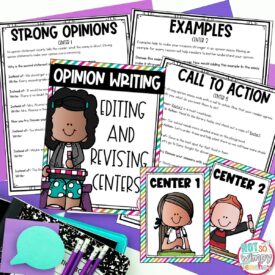
Help your students master tricky writing skills with these FREE Editing and Revising Centers. Students in grades 2-5 will love this fun, collaborative way to practice editing and revising. Perfect for test prep and review.
We won't send you spam. Unsubscribe at any time.

Last updated on July 29, 2023 by Not So Wimpy Teacher
The Best Way to Teach Students Paragraph Writing
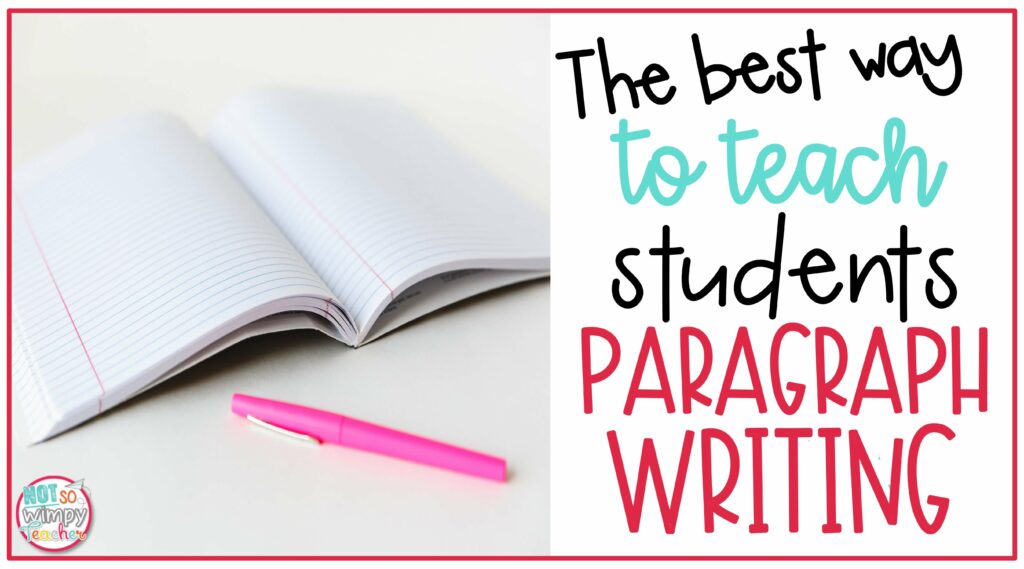
I’m not a betting girl . . . but if I were, I’d bet that many of you start the year with a unit about paragraph writing. Am I right?
I thought so. It’s pretty common to begin your writing instruction with a unit on “how to write a paragraph.” Typical lessons include what a paragraph is, how to write topic sentences and conclusions, and how to construct the perfect five-sentence paragraph.
But after teaching for a couple of years, I stopped teaching paragraph writing at the beginning of the year. And after you read this post, maybe you will too.
By the way, I recorded a video talk about paragraph writing. You can watch it here !
Keep reading more below.
Paragraph Writing is Boring
When I was a new teacher, I too started my writing lessons with the paragraph unit. I thought that’s what you were supposed to do. But I quickly realized that my students were bored to tears.
At first, I thought, oh well, learning how to write paragraphs isn’t very much fun. But it’s a skill students need to learn, so they’ll just have to deal with it.

But the more I thought about it, the more I realized that it wasn’t okay. I didn’t want my kids to be bored. I didn’t want them to think that writing was dull. And I definitely didn’t want them to dread writing workshop.
I wanted writing workshop to be fun. I wanted it to be something my students looked forward to and got excited about. I wanted them to know that writing was going to be different in my classroom.
We all know that how you start the year sets the tone for your entire school year. I did not want to send the message that writing workshop was going to be a drag. But starting with the driest topic certainly wasn’t helping to convince my students that writing is fun.
Students Don’t Care About Paragraphs
The truth is students just don’t get excited about paragraphs. They don’t care about, or even really understand topic sentences. Transition words, hooks, reasons, and examples . . . none of those things really matter to most students. At least not right away.
I decided to flip my instruction around and start with something a little more exciting. A writing lesson the students found interesting. I thought that if I could get them invested in writing, then when I introduced the boring stuff, like paragraph writing, they would be more willing to work on it.
And I was right. Once I got kids hooked on writing, they wanted to be better writers. They were more willing to work on their paragraphs when those paragraphs became an important part of telling a story they cared about.
Paragraphs Aren’t One Size Fits All
Think about it for a minute…
What does a paragraph look like in this blog post? In a Charles Dickens novel? In your favorite psychological thriller, memoir, or chick lit?
The reality is that paragraphs are not all 5-7 sentences long. They come in many shapes and sizes. The length of a paragraph depends greatly on the type of writing. And many of the types of writing that we teach our students don’t have standard 5-sentence paragraphs.
Take personal narratives, for example. You teach your students to start a new paragraph every time the speaker changes. This means that most paragraphs are only one or two sentences long.
Why spend weeks teaching your students that a paragraph has five sentences only to immediately launch into the exceptions to that rule in the next unit? That’s super confusing for kids.
Teach Paragraph Writing in Context
I’ve got good news, though. You don’t need a separate unit for teaching paragraphs. Rather, you can teach paragraph writing within each specific genre of writing. That’s what I do.
I don’t launch each unit with a lesson on paragraph writing, either. First, I get the kids writing. I let them put their ideas on paper and start crafting their masterpiece. Then, a few weeks in, once they are invested in the writing, I introduce a lesson on paragraphs specific to the genre we’re working on. It’s just one of many mini lessons I teach about the genre.
Personal Narrative Paragraph Writing
When I teach personal narrative, I show kids how to start a new paragraph every time a new character speaks. I also model how to use quotation marks and punctuation.
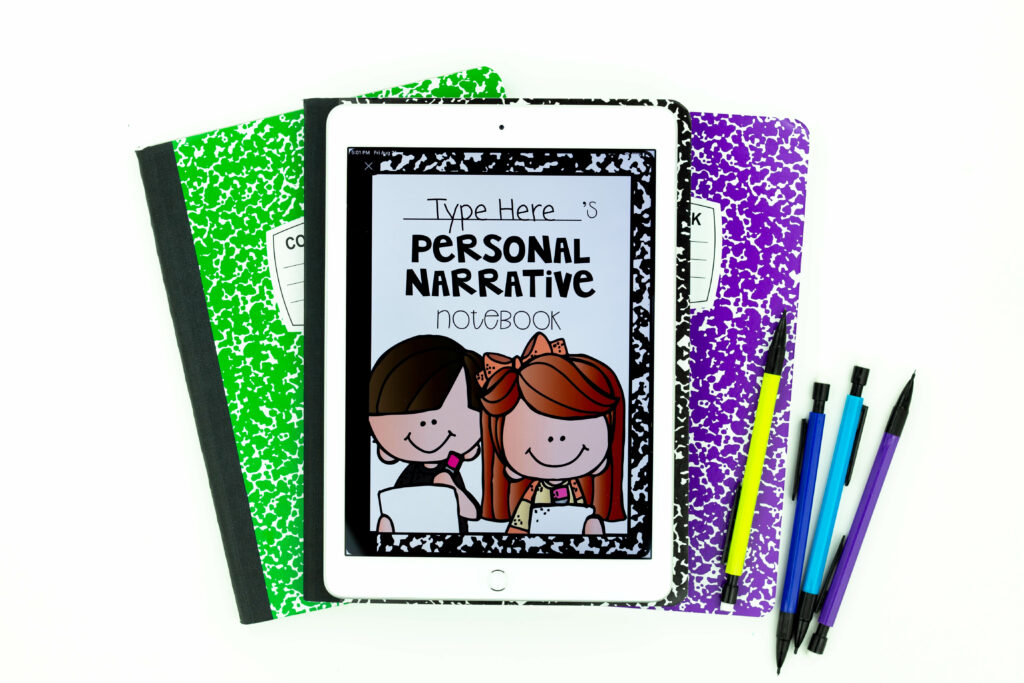
Informational Essay Paragraph Writing
As we move on to other types of writing, I repeat my paragraph lesson specific to each new genre. When I teach informational writing, I explain how every subtopic in their outline becomes its own paragraph. I also teach them about topic sentences, details, and concluding sentences.
This is the typical paragraph many of us think of when we think of teaching paragraphs. It makes sense to teach it inside the informational writing unit because it is appropriate for that genre.
Opinion Paragraph Writing
In opinion writing, the paragraphs are similar to informational writing. There is a topic sentence and a conclusion and supporting details in between. But the important thing for students to understand is that each of the reasons that support their opinion becomes its own paragraph.
Fiction Paragraph Writing
Finally, when I get to fiction writing, the paragraphs become eclectic. Some paragraphs may be one sentence long when students are writing dialogue. Others may be long and chock full of details. When students describe the setting or a character’s thoughts, they may have long, descriptive paragraphs. This variation in length makes the writing more interesting.
I typically teach fiction writing last. So students have already learned about many different types of paragraphs, and they can combine them into one story that is interesting to read.
Perfect Paragraphs Are Not the Goal
At the end of the year, not all of your students will write perfect paragraphs. That’s okay.
They are children. They will continue to practice writing paragraphs year after year, all the way through high school and beyond.
I’ve played around with the paragraph formatting in this blog post a couple of times. And I’ve been writing paragraphs for a really long time.
What you are looking for is growth, not perfection. Do they indent? Are they switching paragraphs when ideas change? Are they using more than one paragraph in their writing?
Teaching writing is about so much more than using paragraphs correctly. You are looking for a story with strong details. You want to see a supported opinion. You want to see that students know how to reference texts and summarize information. All of those things are much more important than perfect paragraphs.
Want to learn how to plan an entire year of writing at one time? Check out this post .

FREE Ultimate Step-by-Step Guide to Teach Paragraph Writing
If you want more information about how to teach paragraph writing, download my Ultimate Step-by-Step Guide to Teach Paragraph Writing. You’ll love this surprisingly simple way to teach paragraph writing to kids in grades 2-5 . It will help your students fall in love with writing and learn how to write a variety of paragraphs. Check out this step-by-step lesson you can use with any genre.
Work With Me
Want to learn more about teaching writing? Awesome!
Writing is my jam. And I’ve created an online professional development course for teachers about how to make teaching writing easier, more effective, and a heck of a lot more fun. Check out my Not So Wimpy Writing Masterclass today.
I specifically developed this online professional development course for teachers in grades 2-5 to help simplify writing workshop and provide the tools and strategies you need to be a more confident writing teacher.
You’ll learn:
- A process for teaching writing that makes it simple, effective, and even joyful to teach writing —for you and your students, too.
- How to create manageable mini-lessons to teach—and have your students stay on task for independent writing time.
- Where to find time every day for writing instruction—and weekly conference time for all of your students.
- How to help ALL your students get the skills they need to become better writers— and perform well on standardized tests.
Most importantly, teaching writing will be easy, breezy, and beautiful—and your students will actually love to write!
The best part is this professional development takes place completely online. You can do it when you want, where you want, wearing what you want. And you get lifetime access to the course. So you can watch it on your time and go back and rewatch it whenever you want.
Registration for the Not So Wimpy Writing Masterclass is currently closed. Be sure to sign up for the Waitlist so you will be the first to know when we open it again. Sign up now so you don’t miss out!
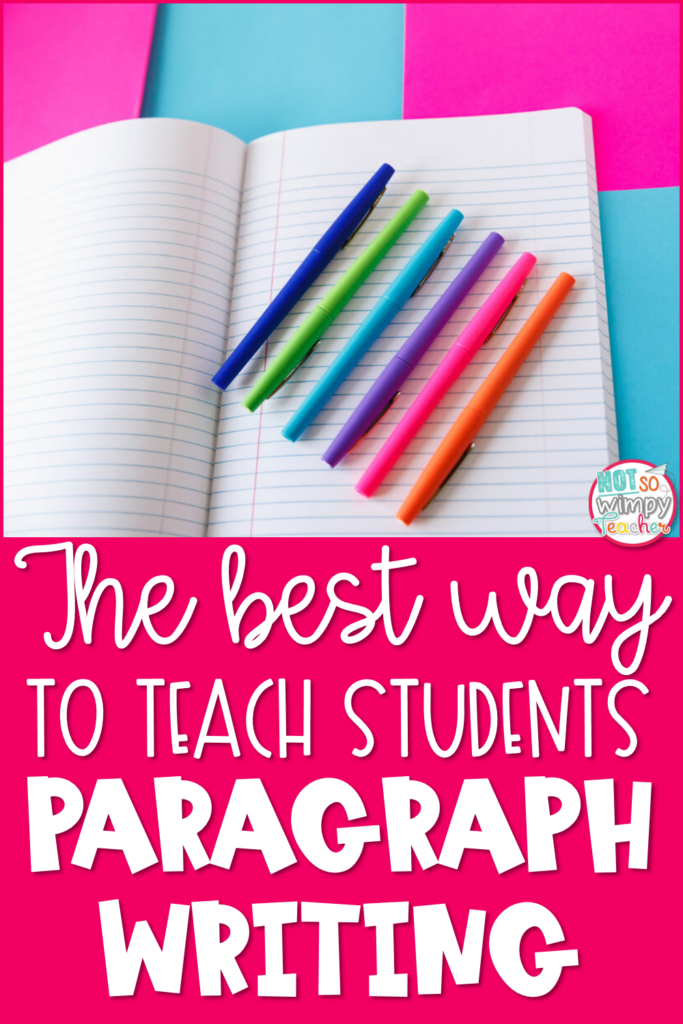
Have a Not So Wimpy Day,

You may also enjoy these posts
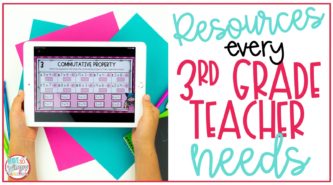
Reader Interactions
12 comments.
May 24, 2021 at 8:05 am
Is the Best Way to Teach Paragraph Writing a free item? If so please email it to me. Thanks.
May 24, 2021 at 7:39 pm
The Writing Pacing Guide is a free resource. To have it delivered to your inbox, please follow the link in the article. Thank you!
June 7, 2021 at 2:36 pm
I am an alumni of your terrific writing course but still have a question. Why aren’t the mentor texts indented? They’re just double spaced between. You even mentioned indenting above. I’ve wanted to know this since I started with your material but never asked. I have my students indent and add the double spacing between.
June 10, 2021 at 6:53 am
I’ve thought the same thing. I know you mention something about it, but can aome mentor texts show indentation so students see the difference?
June 11, 2021 at 1:26 am
Hi Susan, Thanks for your question. The age of digital media changed everything! Some style guides for grammar and formatting changed as well. According to the style guides, it is acceptable to indent or skip a line between paragraphs. It’s not recommended that students do both. It’s one or the other. I think it’s important that students see text in both ways and have conversations about the different formats.
February 23, 2023 at 11:31 pm
Hi! May I ask what style guides you follow?
February 28, 2023 at 12:13 am
Hi Dianne, Our informational writing bundle includes lessons on the importance of citations and the information needed to cite. As teachers have different expectations on which style to use when creating citations, we leave it up to the teacher which style guide to use. When writing essays in grades 2-5 it’s important for students to maintain the same voice throughout the paper. The revision lessons guide them with that skill.
November 10, 2021 at 6:42 am
I love the layout of all the info
November 10, 2021 at 6:44 am
Im lookingforward to getting more info from you. The literature on paragraph writing has been very useful to me
November 10, 2021 at 10:22 am
You’ll find the writing pacing guide to also be useful. To have it delivered to your inbox, follow the link in the article.
Wonderful website. Great resources
March 21, 2024 at 1:33 pm
Thank you. This looks wonderful!
Leave a Comment Cancel reply
Your email address will not be published. Required fields are marked *
Save my name, email, and website in this browser for the next time I comment.
More than 400 helpful resources available in my shop!
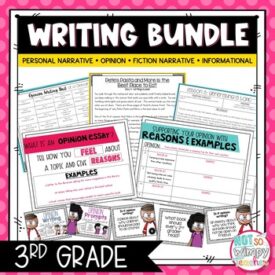
Not So Wimpy Writing Masterclass
Do you struggle to find time to teach writing? Do you find it a challenge to deliver lessons that help all of your writers? Would you like to learn a simple and effective way to teach writing? The Not So Wimpy Writing Masterclass is an online professional development course for grades 2-5. In this course, you will go from feeling overwhelmed to feeling confident and excited about teaching writing.
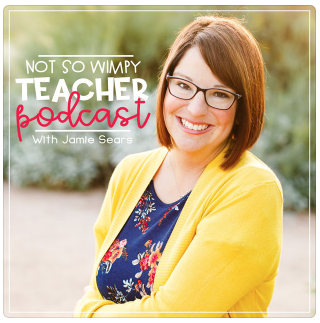
Check out these recent podcast episodes:
- Connecting with Students Online with Jennifer Serravallo
- A Simple Problem-Solving Strategy That Works Every Time
- Giving Students Feedback About Their Writing
- Virtual and Socially Distant Valentine’s Day Activities for the Classroom
- How to Use Project-Based Learning in the Classroom
Grab a snack and join the discussion over on Facebook!
We have four separate groups for grades 2-5
Get even more great tips and tricks on my YouTube channel!

We LOVE and recommend these products!
Check out the books, supplies, and other products that we use in our own classrooms. We only recommend those things that we absolutely love and swear by!

Hello! I’m Jamie
- I believe that students need to be the leaders of the classroom. Even third graders are old enough to be held accountable and to take responsibility for their learning.
- I do not believe that kids were made to sit in seats. They need to get up and move around.
- Differentiated instruction is a must. I use guided reading and guided math groups to meet the individual needs of my students.
- Helping a student to discover their love for reading is a privilege that I never get tired of.
- School should be fun! We party in my class!
Follow Me Here
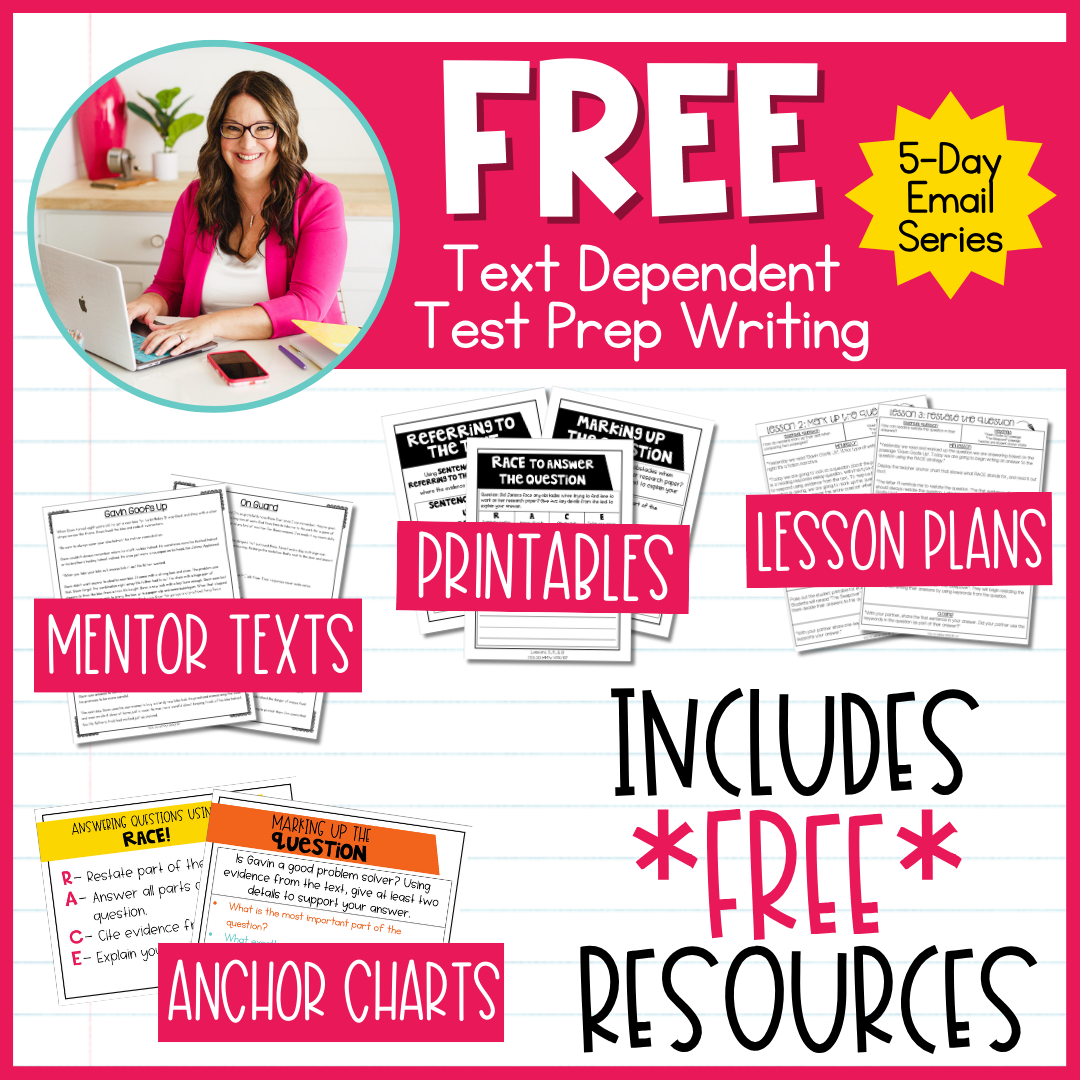

- All topics A-Z
- Grammar
- Vocabulary
- Speaking
- Reading
- Listening
- Writing
- Pronunciation
- Virtual Classroom
- Worksheets by season
- 600 Creative Writing Prompts
- Warmers, fillers & ice-breakers
- Coloring pages to print
- Flashcards
- Classroom management worksheets
- Emergency worksheets
- Revision worksheets
- Resources we recommend
- Copyright 2007-2021 пїЅ
- Submit a worksheet
- Mobile version

How to Teach Children the Steps to Write a Short Narrative Essay

2D Art Ideas for Children
A successful narrative essay has strong ideas, a consistent voice and careful organization. Teaching children to write short narrative essays begins with careful modeling and planning. You can use your favorite storybooks to discuss the elements of narration: setting, characters, point of view and plot. Guide children to pre-write their essays and organize their ideas before beginning a draft. Help children revise their essays not only for correct grammar usage, but also for an introduction and a conclusion that make a strong impact on the reader.
Step One: Model Format
Children enjoy stories but are often unaware of the elements needed in crafting a narrative of their own. Use model picture books to help students pick out the setting, characters, problem or conflict and series of events. For example, a third grade lesson on the picture book Cloudy with a Chance of Meatballs by Judy and Ron Barrett guides children to construct a day of raining food, using the elements of narrative writing. Once children are aware of the elements of a narrative, guide them through the writing process using the "Show Me Your Story" print guides. These step-by-step narrative essays are useful examples for children just beginning to grasp the fundamental elements of narration. Each example is scored for its ideas, voice, organization and grammar.
Step Two: Organize Ideas
Even after children understand the elements of narrative writing, they will need help organizing their ideas into an essay format. Plan sheets help to guide students on what to write in each section of their essays. Help children select a point of view, either first person or third person, to guide their narration. Make sure children have a clear problem and logical order of events before they start writing. By brainstorming ideas and organizing them before writing, children will be more likely to stay on topic and finish a narrative essay.
Step Three: Beginning a Narrative Essay
The beginning of a narrative should be active and hook the reader into reading the rest of the essay. Help children write engaging beginnings by practicing crafting the first sentence of a story to include the main character, the setting, and an action that starts the series of events to follow. Scholastic.com offers a series of practice exercises that help children revise beginnings to engage the reader. Practice writing exciting beginnings on other topics to help children become comfortable with writing a narrative style essay.
Step Four: Ending a Narrative Essay
The ending of a narrative essay should reveal how the main character has changed or grown over the course of events in the writing. Scholastic suggests focusing narrative endings on the main character’s memories, decisions, actions, and feelings at the end of the events. For example, a narrative essay on a most embarrassing memory may want to end with the feelings of the main character and the lasting affect of the events. A strong narrative ending clarifies the lesson or moral of the story and links the story to the essay prompt or assignment topic.
Related Articles

How to Teach Second-Graders to Write Book Reports

Creative Writing and Editing Checklist for the Sixth Grade

Fun Ways to Teach Story Sequence to Kindergarten

How to Write a Speculative Essay

What Is a High School Level Narrative Paragraph?

Simple Past Tense Classroom Activities

How to Use Picture Cues to Teach Reading

How to Write a Story for the 2nd Grade
- Kent Cygan: Narrative Essay Planning Worksheet
- Scholastic: Super Story Writing Strategies & Activities
Based in Winchester, Va., Karen Hartless has 10 years of teaching experience in the areas of English, creative writing and public speaking. She earned a Master of Education degree as a reading specialist from Shenandoah University, focusing on teaching, reading, and writing clear, concise text.
- Skip to primary navigation
- Skip to main content
- Skip to primary sidebar
- Skip to footer
This site contains affiliate links at no cost to you. Read disclosure here .

The Natural Homeschool
Living and learning the natural way
How to teach my child to write an essay
Homeschool , Language Arts Homeschool , Subjects
Navigating the internet, you can find multiple articles about the nuances of writing academic essays and improving the writing skills of adults. However, when teaching children the nuances of essay writing, you should be very careful and attentive. The first knowledge on how to write an essay plays a fundamental role in a kid’s development and further learning.
Thus, the techniques, secrets, and explanations should be as effective as possible. So, when asking yourself, “how do I teach my child to write an essay?” be ready for not-so-hard and exciting work ahead! Also, don’t forget to get computer science assignmen t help or you can find more information on assignment topics to be more free while studying.

Before starting an essay writing journey
Before teaching kids details of essay learning, the initial work is crucial. Although writing skills and techniques are important, a child should know the benefit of writing essays, how to enjoy the process of writing, and what opportunities are available if one succeeds in this activity. For example, understanding the role of a custom essay writing service can provide insights into professional writing standards and the various styles and structures used in essays.
Thus, before exploring working tips, let’s have a look at several actions that would prepare the groundwork for the smooth and entertaining teaching:
- Start with familiarizing a kid with the genre of the essay. Find what a child likes the most – stories about wizards or space, adventures or nature, and encourage one’s interest in the genre. Further, tell a kid that anyone can create such captivating texts – it’ll boost their confidence and commitment.
- Become a kid’s superhero – show by your example that writing essays is cool, and many adults do it. Besides, regular writing can be your way of emotional recharging and memory stimulation and even prevent mental health problems!
- Train to write essays without rules : indeed, further, you’ll know how to teach your child to craft essays according to standard requirements, but it’s good to start with something easy. For example, make a deal that you and your kid will write an essa y together or individually, describing the weekend or vacation you’ve spent together. First and foremost, demonstrate that essay writing can be fun!
- You must have patience and encourage your kid even if they make mistakes : after all, our falls teach us something new.

Simplicity and basics of essay writing with kids
So, you’ll start wondering: “how to teach my kid to write an essay, and where should I begin?.” The key to success lies in the basics of essay writing. First, start with evaluating your kid’s writing skills and knowledge.
For instance, assign them to write an essay on any subject and analyze the text together. Explore grammatical errors (often, children repeat their mistakes), and look at the essay’s structure and construction of sentences.
After you work on errors, it is paramount that you teach your kid to:
- Create an outline. This prewriting phase of crafting an essay saves a bunch of time and allows writing the text without losing your way. So, basically, an outline is the plan of your future text – it represents the structure of the essay, including a number of paragraphs, introduction, topic sentences, and conclusion. Due to the outline, your kid won’t be distracted and will stick to the initial plan.
- Develop an insightful thesis statement. In this last sentence in the introductory paragraph, your kid will present the central thought of the essay; therefore, practice creating concise and informative thesis statements.
- Keep the balance. In most cases, essay writing includes strict requirements. The word count, topic, and type of essay are the essential orienteers that an instructor can change. However, there’s an aspect that remains forever stable: your kid’s essay should be balanced. The paragraph size should be the same, and the introduction and conclusion should not exceed the word count of one paragraph. Such nuances are simple to memorize and effectively implement!
- Analyze different sources. Writing essay s often requires learners to read various articles, blogs, or books to craft a response or discussion essay. Therefore, teach your kid to assess various materials: read a piece together and discuss how it relates to the assigned topic. Alternatively, ask your kid to browse the web and find several articles on the same issue. Markedly, technology is one of the greatest advantages for today’s adults and children!
After learning these fundamentals and practicing several times, your child won’t have any difficulty crafting essays. You won’t have to relive this shiver of hesitation asking yourself, “how to help my child write an essay?” a hundred times.

Other effective tips for teaching a child to write an essay
None of us is born a genuine mentor or teacher able to teach a kid to be an excellent writer easily. However, due to some effective tips, even a person with no prior experience in writing can explain to a kid the nuances of writing and, more importantly, explain how to write with joy!
So, pay attention to such recommendations: ● Encourage your kid to read. Don’t limit yourself to essays – any text, either scientific or fiction, can significantly expand one’s vocabulary. ● Share your experience of writing essays when you were a student. Tell your kid what you liked about the process, which topics inspired you, or what writing strategies you used. ● Practice writing by composing essays about your child’s favorite movies or series. For example, assign them to write a response essay after each watched episode. You’ll notice the progress even in the middle of season one! ● Luckily, we live in a digital age when maintaining quality educational assistance is a piece of cake! If you feel that your confidence and experience are not enough, feel free to use the help of expert writing services, whose specialists possess great experience in creating papers of various formats and can consult you about crafting original and properly structured essays. Thus, if you still feel a little lost when your kid again asks you, “please, help me to write my essay!” there’s no nothing to worry about.
If you’ve ever asked yourself the question, “how can my child learn how to write an essay?” Now you’ve got numerous working tips that can help you and your child genuinely enjoy writing essays.
After learning the basics of writing essays, your kid will approach the assignment without a shadow of a writing block or discomfort. And becoming a creative writer will not take long – when a kid is surrounded by support, exciting topics, and interesting practice options, one is definitely about to succeed!
You might also like this on how to write an essay:
How to choose a topic for a research paper
The Best Homeschool Writing Curriculum
How To Create A Children’s Learning Nook
The Best Way for Children to Learn to Write Cursive {Free Printables}
The Best Free Printable Sentence Strips for Sentence Starters
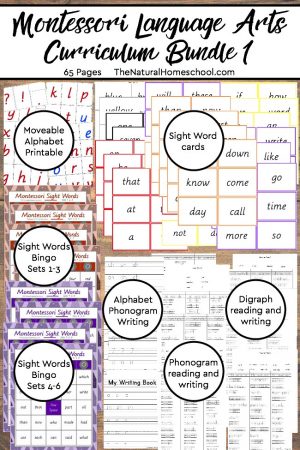
Montessori Language Arts Curriculum Bundle 1
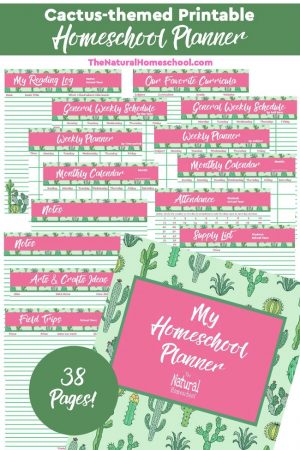
Cactus Homeschool Planner {38 Pages}
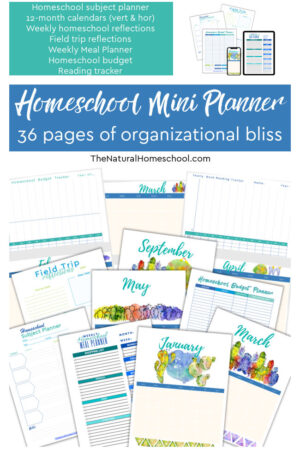
Reusable Printable Homeschool Mini Planner (36 pages)
Latest posts.

Join 14,000+ homeschoolers!
Reader Interactions
Leave a reply cancel reply.
Your email address will not be published. Required fields are marked *
Rider11 says
November 21, 2022 at 4:08 am
I and my friends were going through the nice, To get helpful tips from the blog then the sudden came up with an awful suspicion I had not expressed respect to the website owner for those secrets.
Search this Blog
Grab my button.


Narrative Writing for Kids: Essential Skills and Strategies
Narrative Writing for kids starts with fun and creativity.
A good story lies at the heart of excellent narrative writing. This genre is relatively easy for younger students to ‘get’ as storybooks are most often the first types of text they will encounter.
As they prepare to begin writing their own narratives, though, we need to tease out of our students exactly what we mean by ‘story’. That meaning is to be found in the essential elements of a narrative.
Step 1: Learn the Essential Elements of a Narrative

Before teaching specific narrative writing strategies to your students, you’ll need to ensure they clearly understand the six essential elements of a story.
Below, we’ll review each of these story sections alongside an example of each in action chosen from the fairytale Little Red Riding Hood .
i. The Exposition: Characters and Setting
The exposition or opening of the story orientates the reader, usually by revealing the story’s setting and introducing the main character/s. It may also hint at the central problem yet to come.
Frequently, the setting and characters are closely related. For example, a science fiction story might have space as its setting and an astronaut as the main character.
“Once upon a time, there was a little girl who lived in a village near a thick forest.”
ii. The Problem: The Conflict
Without a problem or conflict, there is no story, just a list of events. Here are some examples of the more common types of conflict to be found in stories:
- Main Character vs Character: A face-off against an arch-enemy.
- Main Character vs The Self: Overcome a personal flaw.
- Main Character vs the World: A struggle against society.
- Main Character vs Nature: A battle against the environment or an animal.
- Main Character vs Supernatural: A war against the otherwordly.
“One day Little Red Riding Hood decided to take a basket of goodies to her Grandma, who lived in a little house in the forest. ‘Remember,’ her mother told her, ‘Go straight to Grandma’s house and don’t dawdle. The Big Bad Wolf is lurking in the forest.’
iii. The Rising Action: More Problems
Usually, more obstacles than one will be put in the main character’s path. These extra dilemmas help build tension as the story progresses on its way towards the climax.
“The Big Bad Wolf ran to Grandma’s house. He gobbled her up, put on her clothes, and climbed into her bed.”
iv. The Climax: The Dramatic Highpoint
The climax is when the story’s central problem comes to a head. For example, the main character might finally have that dramatic showdown with her nemesis. The climax should be the most exciting, drama-filled part of a story.
“The woodcutter burst into the room swinging a huge axe above his head. The Big Bad Wolf jumped out the window and ran deep into the forest.”
v. The Falling Action: The Winddown
Where the rising action of a story helps build tension as the story works towards its climax, the falling action relieves the tension after the drama of the climax. The falling action describes what happens directly after the climax as the story works its way towards the resolution.
“Little Red Riding Hood let out a huge sigh of relief. ‘Thank you!’ she blurted out to the woodcutter.
THE STORY TELLERS BUNDLE OF TEACHING RESOURCES

A MASSIVE COLLECTION of resources for narratives and story writing in the classroom covering all elements of crafting amazing stories. MONTHS WORTH OF WRITING LESSONS AND RESOURCES, including:
vi. The Resolution: Tying-Up Loose Ends
This section of the story is where the writer ties up any of the story’s loose ends.
“And from that day on, no one ever saw the Big Bad Wolf in the forest again.”
Step 2: Internalize the Elements
Students will need some practice activities to help internalize these essential elements before they can begin to structure the plot of their own stories satisfactorily.
Here are a trio of practical activities to help your younger students achieve this.
Activity 1: Identify the Elements
- Organize students into smaller groups of around three or four for this activity.
- Give students a selection of well-known stories to work on in their groups – fairy tales work well for younger students.
- Challenge the students to identify the following elements of each story: character and setting, problem, rising action, climax, falling action, and resolution.
- Groups present their findings to the class – you may wish to assign each group the same story if you want to compare and contrast each group’s decisions.
Activity 2: Plot the Plot
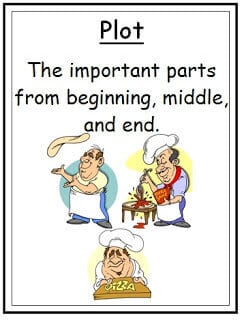
- Students draw one small picture in their groups to illustrate each of the elements identified in the previous activity.
- Students then draw an x and y-axis on a large sheet of paper.
- Students label the horizontal x-axis ‘Time’ and the vertical y-axis ‘Drama’.
- Students then plot each element of the narrative as it occurs chronologically from left to right. The more dramatic the story element is, the higher the plot point will be on the y axis.
- Students paste each illustration above the corresponding plot point on the graph, creating a visual representation of the story’s action.
Activity 3: Don’t Lose the Plot!
- Each group can present their graph of the story’s action to the class.
- Using their graph as a visual prompt, each group retells the story with reference to the rising and falling action as depicted in their graph.
Once your students have grasped the main elements of a soundly constructed narrative, it’s time for them to put the theory into practice.
The following fun activities will help your students begin to create their own narratives.
Step 3: Get Off to a Great Start
As we’ve seen from the essential elements section, a strong opening begins with the setting and the characters, with the central problem hot on their heels.
The purpose of these sections is to grab the reader’s attention firmly enough that they will want to continue reading the rest of the story. The following activities will help your students get off to that strong start by introducing characters and a setting, defining the central problem, and building the rising action by introducing further obstacles.
It all starts with choosing characters and a setting. We need to make this as interesting as possible for our apprentice writers. If the writer themself is not interested, how can they hope to engage the reader?
Activity 1: A Stranger in a Strange Land
- Ask students to think of as many different types of fictional stories as they can.
- Write their suggestions on the whiteboard, e.g., science fiction, fantasy, adventure, horror, romance, etc.
- Ask students to list the types of characters they would expect to find in each type of story, e.g., astronauts in a science fiction story, a young married couple in a story about a haunted house, etc.
- Write the students suggestions beside each story type on the whiteboard.
- Organize students into groups of three or four as before, and ask them to match each type of story with the most unlikely characters (at least two characters should be chosen) from the class’s suggestions. These will form the settings and characters for the stories students will write later.
Activity 2: Pick a Problem
- Students need to flesh out their characters. To do this, instruct them to write brief profiles including a physical description and some simple biographical details – use a graphic organizer to help!
- To create their central problem, students should decide on conflicting motivations for two of their characters. For example, Little Red Riding Hood’s motivation is to visit her grandma and return safely. On the other hand, the Big Bad Wolf’s motivation is to eat both Grandma and Little Red Riding Hood.
Activity 3: Raise the Stakes
- Explain to students that they can increase the dramatic tension in their story by adding further obstacles in the main character’s path.
- Give the students the task of brainstorming some additional problems they can create for their main character to solve on the way to their story’s climax.
Step 4: Bring Things to a Head
By now, the students will have worked their way to the dramatic highpoint of their story’s action, and it’s time to delve into the climax and the falling action that will lead the story down the slide of the falling action towards the narrative’s final resolution.
Activity 1: Learn from the Best
- Organize students into groups of three or four.
- Ask the students to make a list of their Top 3 Favorite Movies and Top 3 Favorite Books .
- Instruct the groups to discuss and identify the climactic moments in these narratives.
- Task students to make a list of the features of each that made each climax work. What was the main character trying to achieve? What was preventing them from achieving it? How did they achieve their goal in the end?
- Finally, ask students to think about their own story. What can they take from the climaxes of their favorite stories to help them complete their own narratives?
- Have students share their ideas with each other.
Activity 2: Wrap Things Up
- To identify the falling action, students ask themselves: What happens after the action of the climax has finished?
- To identify the resolution, students ask themselves: What loose ends from earlier in the story need to be tied up?
Step 5: Plan a Narrative
The activities above will have helped your students internalise the narrative arc’s essential elements and laid much of the preparation work for writing their story.
At this stage, they should be ready to map out their story using a graphic organizer. One that organizes their notes in the sequence of the essential elements listed above will help reinforce student understanding.
Once they have completed their graphic organizer, it’s time for students to zoom in on their focus, from the big picture to the finer details.
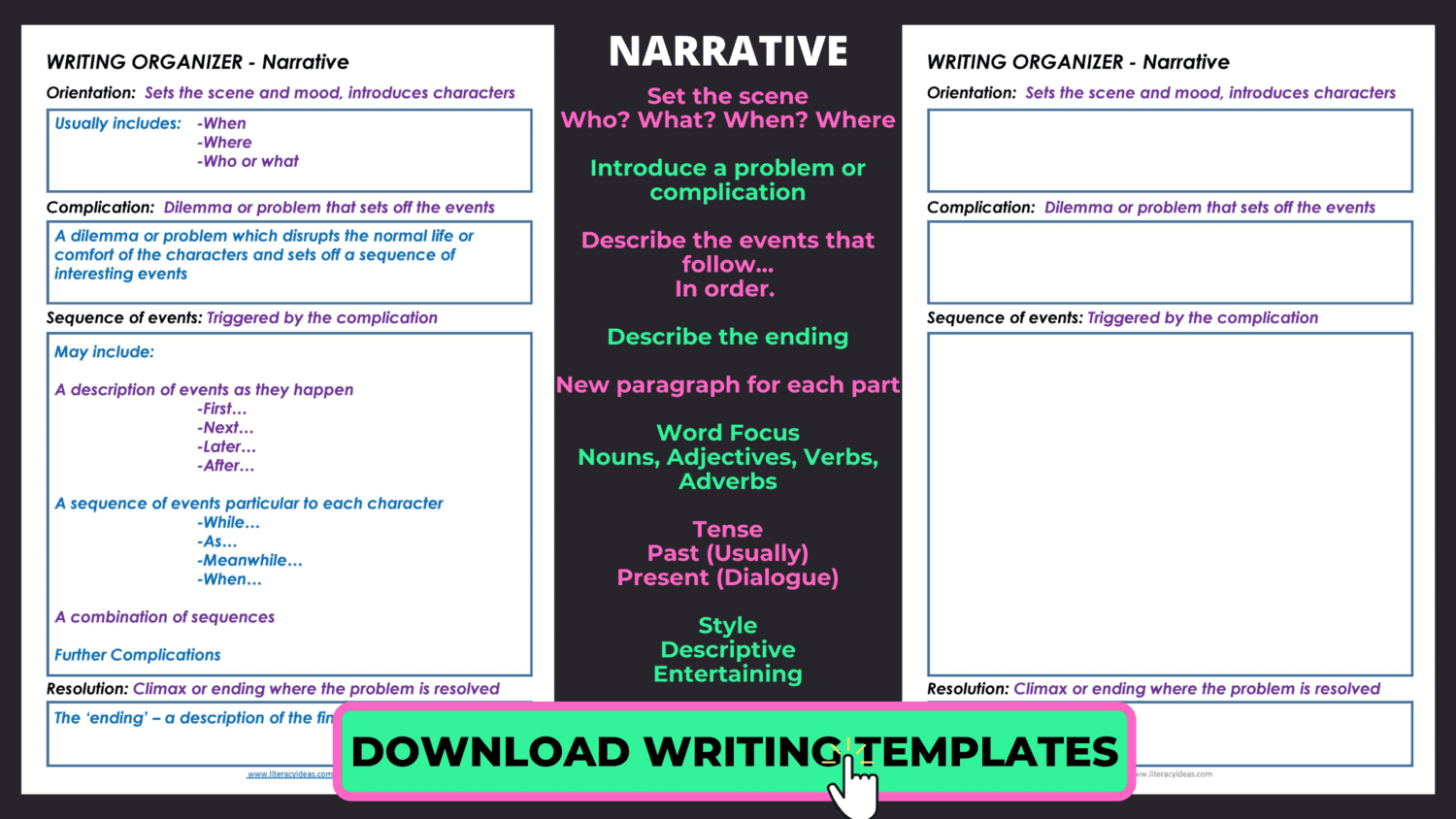
Step 6: Narrative Writing Tips
There is more to a well-written narrative than a soundly structured story arc. The writing itself must be finely crafted and filled with detail if it is to create vivid pictures in the reader’s mind and take them on an emotional journey.
The following tips will help students bring color and life to their writing.
Tip #1: Appeal to the Senses
When writing descriptions, encourage students to incorporate the five senses into their writing. Often, students focus on describing what can be seen and heard but challenge them to appeal to the other senses in their writing too. For example, what can be smelled, tasted, felt in this scene?
Tip #2: Show, Don’t Tell
This is an old-school writing standby for a good reason. Prompt students to reveal character through actions rather than directly telling the reader what they’re like. Suppose a character is greedy, for example. In that case, the student could show this by having them eating everyone’s food at a party rather than simply writing something like, ‘Stephanie was a very greedy person.’
Tip #3: Choose Just the Right Word
Writing is an excellent opportunity for younger writers to broaden their vocabulary. Help students choose just the right word to tell their tale accurately by teaching them how to use a thesaurus. Choose one that is suited to your students’ ages and abilities. You’ll find a tremendous kid-friendly online thesaurus here.
Tip #4: Select Powerful Verbs
Due to their more straightforward nature, stories written by younger students are generally action-driven rather than character-driven. In such cases, verbs will drive the action of the narrative. Therefore, encourage students to select strong verbs to create that compelling narrative that readers love to read.
Tip #5: Edit – Always!
Younger students need to learn the importance of drafting, editing, and proofreading when writing any type of text. As story writing is often their first experience of extended writing, teachers should take the opportunity to create good editing habits from the start.
A COMPLETE UNIT ON TEACHING NARRATIVE WRITING

Teach your students to become skilled story writers with this HUGE NARRATIVE & CREATIVE STORY WRITING UNIT . Offering a COMPLETE SOLUTION to teaching students how to craft CREATIVE CHARACTERS, SUPERB SETTINGS, and PERFECT PLOTS .
Over 192 PAGES of materials, including:
No doubt about it; there’s a lot to narrative writing. Luckily, most of our younger students will already be familiar with many of the basic conventions of storytelling from their years of listening to bedtime stories and watching their favourite cartoons. This is why emergent writers usually learn to write narratives before many other text types.
Of course, narratives play such a crucial role in a student’s early years because children love stories. We all do! So, while there is quite a lot for students to work on, narrative writing is usually an easy sell.
With an understanding of the basic underlying structures and a little imaginative flair, your students will produce entertaining stories in no time.

IMAGES
VIDEO
COMMENTS
Six steps to teaching your child essay writing: Step 1. Pick a topic and say something about it. In order to write, your child must write about something. That something is the subject of the essay. In this step, you want to help your child pick a topic and say something about it.
Follow your outline, using each of your supporting points as the topic sentence of its own paragraph. Use descriptive words to get your ideas across to the reader. Go into detail, using specific information to tell your story or make your point. Stay on track, making sure that everything you include is somehow related to the main idea of your ...
Students should be encouraged to learn words they frequently misspell, as well as words they wish to include in their writing. Teachers also should help students acquire the skills they need to generate and check plausible spellings for words. 3. Teach students to construct sentences for fluency , meaning and style.
This is how she will begin building her thesis. Teachers sometimes disagree over whether students should start with a working thesis and then find evidence to build their case, or start with ...
Follow these seven tips to teach essay writing to your children. Refresh on basic writing skills. Before you dive into essay writing, make sure your child has a good grasp on the basic elements of writing. Make sure they know the importance of things such as proper spelling and the rules of grammar. Remember to teach them these concepts at an ...
After You Write. This lesson gave you three essay writing steps: choosing a topic, brainstorming, and writing. There is one more step that you can take if you want your writing to be exceptional ...
Every essay includes an introduction, exposition, and conclusion. Outlines help people get organized when writing, and this should help your child as well. Write down the topic and their main goal which helps them clearly identify their main idea and their opinions about it. There are plenty of outline types out there, so you can easily find ...
270 pages of the most effective teaching strategies; 50+ digital tools ready right out of the box 75 editable resources for student differentiation ; Loads of tricks and tips to add to your teaching tool bag; All explanations are reinforced with concrete examples.; Links to high-quality video tutorials; Clear objectives easy to match to the demands of your curriculum
Use games. There are numerous games and puzzles that help children with spelling while increasing their vocabulary. Some of these may include crossword puzzles, word games, anagrams, and cryptograms designed especially for children. Flash cards are fun to use too, and they're easy to make at home. Turn your child's writing into books.
Create Story Prompts. A fun way to improve kids' creative writing skills is to have them write short stories. Cut out pictures from a magazine with different characters or locations, or write down different words. Place these in a container or glue them to cards to use as writing prompts for creating a unique story.
Discuss writing blocks and ways to overcome them. Discuss the planning process and experience how it helps flesh out an essay. Walk them through each lesson making sure they complete each step successfully before attempting to move on in the writing process. Working side by side with your student also helps you become a better instructor by ...
Try having students post a weekly response to a writing prompt or question that you assign. You may also want to create a separate discussion board where students can post ideas about their essay and get feedback from you and their classmates. 6. Give students homework to help them develop their essays.
The Four Square is a graphic organizer that students can make themselves when given a blank sheet of paper. They fold it into four squares and draw a box in the middle of the page. The genius of ...
3. Get them to first make an outline and then fill it out. This is another great way to help your child feel relaxed and excited about essay writing. Devote some time to discussing the prompt and developing an outline with your child. Once the outline is in place, your child will be able to fill in the argument and supporting facts with much ...
After you make sure that their knowledge is ready to be advanced to the essay writing stage, you should start by introducing the concept of a thesis. The first difficulty children face is directing their essays and keeping them focused. If your children struggle with writing concepts, you can provide thesis prompts or thesis statements for them.
Blast through resistance and teach kids to write. A best-selling author offers five techniques to get kids excited about putting words on the page. I strutted into the creative-writing classroom confident that my experience as a novelist and science writer had granted me wisdom to teach children to blossom as writers.
Understand the requirement of the essay through the title. #. Create a rough outline of the paragraphs you want to include. #. Prepare your reference material through good research. #. Follow the three basic components of an essay: the introduction, body, and conclusion. #. After finishing, always proofread thoroughly.
Look at a third-grade opinion rubric, and write three short essays before you begin. Good writing requires practice and repetition (like most things). Introduce the concept of an opinion to your child, and talk about how to express an opinion. Explain the rubric to your child, and let him play teacher as he looks at your essays.
The reality is that paragraphs are not all 5-7 sentences long. They come in many shapes and sizes. The length of a paragraph depends greatly on the type of writing. And many of the types of writing that we teach our students don't have standard 5-sentence paragraphs. Take personal narratives, for example.
Outline. The last thing to do before starting to write an essay is to make its outline. Choose some topic and make a list of points your students would need to mention if they wrote an essay on it. Such a technique will give them a better understanding of what and essay is, and how it should be written. Make sure that all students perfectly ...
Step One: Model Format. Children enjoy stories but are often unaware of the elements needed in crafting a narrative of their own. Use model picture books to help students pick out the setting, characters, problem or conflict and series of events. For example, a third grade lesson on the picture book Cloudy with a Chance of Meatballs by Judy and ...
The key to success lies in the basics of essay writing. First, start with evaluating your kid's writing skills and knowledge. For instance, assign them to write an essay on any subject and analyze the text together. Explore grammatical errors (often, children repeat their mistakes), and look at the essay's structure and construction of ...
By Shane Mac Donnchaidh June 28, 2021March 5, 2024 March 5, 2024. Table of Contents. Narrative Writing for kids starts with fun and creativity. Step 2: Internalize the Elements. Step 3: Get Off to a Great Start. Step 4: Bring Things to a Head. Step 5: Plan a Narrative. Step 6: Narrative Writing Tips.
How Children Learn to Read. Teacher and literacy coach Margaret Goldberg gives a concise and clear explanation of the science of reading and how it makes sense in her teaching practice. Using animations, graphics and student video examples, Margaret connects the dots from research to instruction, covering how the brain reads, how we use letters and sounds for reading, and how we use meaning ...